CENTRAL FLORIDA



P.O. Box 941125 Maitland, FL 32794 www.caicf.org
Justine Tucker, CED exdir@caicf.org
Membership Manager Tara Ruch membershipmanager@caicf.org
THANK YOU 2025 BOARD OF DIRECTORS!
Tracy Durham, CMCA, AMS, CFCAM, PCAM, President
Stefanie Nicholson, CMCA, AMS, Vice President
Jessica Cox, CMCA, AMS, Treasurer
Stacey Loureiro, CMCA, AMS, Secretary
Brian Jones, Past President
Joey Arroyo, LCAM
Patrick Burton
Jarad Pizzuti, Past President
Frank Ruggieri, Esq.
Jackie Swisher
Can you believe the first quarter has come and gone already?! Time really does fly when you’re having fun.
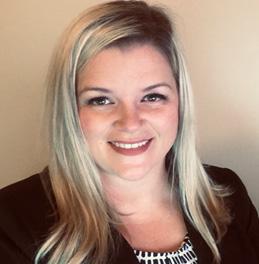
The circus came to town at last week’s CA Day. What an amazing turnout of managers, homeowners and exhibitors! I heard so many comments on what a great theme it was and how much fun was being had by everyone who attended. Check out a sampling of the photos from this spectacular event on page 18. We’ll also be posting the full album of photos to the website soon.
A BIG TOP thank you to Christy Raymond and the entire Trade Show Committee for giving your time and talents to make this show such a success! I do not think many know the amount of work it takes to make this day happen, so THANK YOU!
Upcoming Event Reminders:
We look forward to our first NEW location for the April luncheon. Make sure to register for the Central Florida Zoo luncheon this week. If you are interested in discounted tickets to visit the Zoo after our luncheon, please contact Justine Tucker, CED at exdir@caicf.org.
Join the Cares Committee on April 11th at The Mustard Seed to volunteer at their warehouse. This is a great time of networking while we give back to the community!
The Volusia Luncheon will be held at the Halifax River Yacht Club on April 16th.
Thank you for continuing to support the Central Florida Chapter of CAI.
See you soon!
Sincerely,
Tracy
Tracy Durham, CMCA, AMS, CFCAM, PCAM CEO, Edison Association Management 2025 President, Central Florida Chapter CAI
If you are interested in getting more involved in the chapter, joining a committee is a great thing to consider. Below are the different committees that we currently have active. Please feel free to contact any of the following committee chairs:
CA Day/Trade Show Committee
Christy Raymon
Don Asher & Associates christy@donasher.com
Communications Committee
Benjamin Isip
Towers Property Management, Inc. ben@towerspropertymgmt.com
Education Committee
Suzan Kearns
Premier Association Management suzan.kearns@premiermgmtcfl.com
Meet the Managers Committee
Angela Timmons
Greystone Management angela@greystone-mgmt.com
Annual Meeting/Gala Committee
Jackie Swisher EmpireWorks Reconstruction jswisher@empireworks.com
Golf Tournament Committee
Seamus Devlin
RL James sdevlin@rljames.com
Legislative Committee
Tom Slaten Larsen and Associates tslaten@larsenandassociates.com
Shayla Mount
Arias Bosinger sjmount@ablawfl.com
Membership & Registration Committee
Mary Ann Sheriff One Florida Bank msheriff@onelforidabank.com
Social Committee
David Cofressi Behr Paint dcofressie@behr.com
Cares Committee
John M. Calpey One Florida Bank jcalpey@onefloridabank.com
Finance Committee
Leslie Ellis Glickstein Laval Carris LEllis@glccpa.com
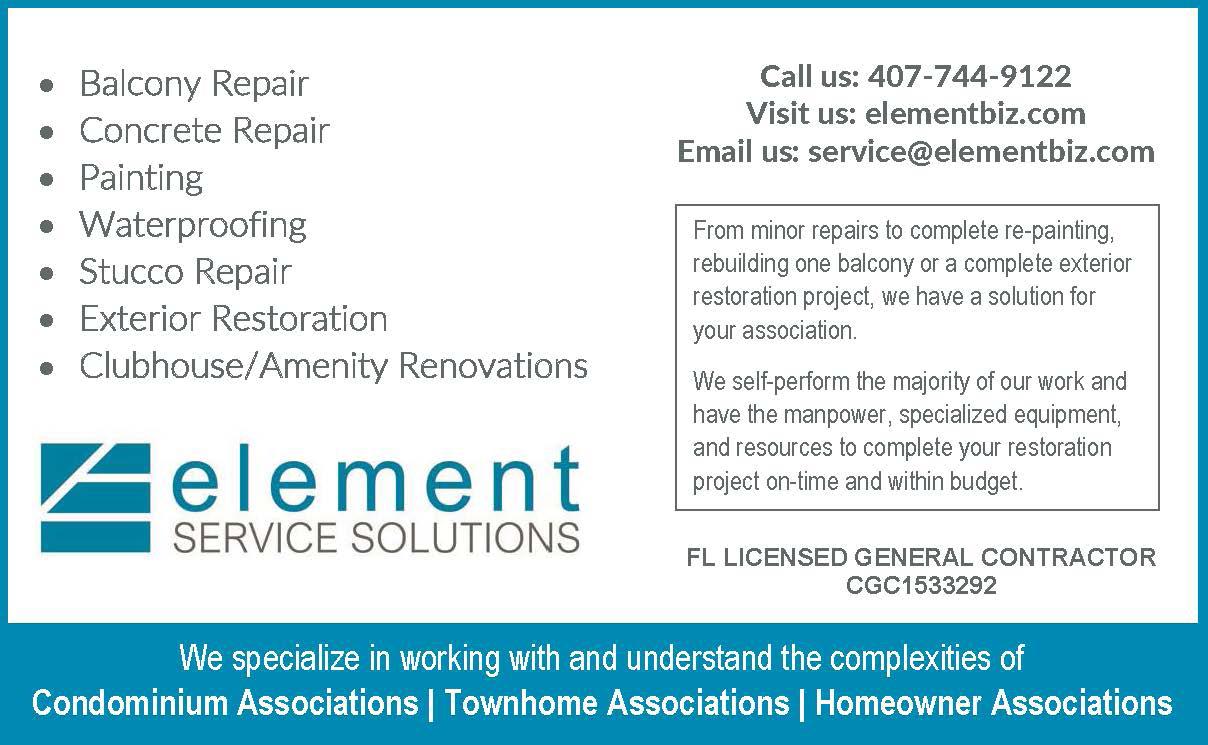
More details regarding upcoming events will be posted to caicf.org under the “Events” tab. Check back regularly for the most up-to-date information. CAICF Board Meetings will be held before or after each of the Monthly Meetings. Please be sure to register for all events in advance, as we need an accurate head count for space and food purposes prior to the event. Thank you for your help!
• April 3, 2025: Monthly Meeting Luncheon at the Central Florida Zoo. Get ready for a wildly unforgettable luncheon! Join us for a day of meaningful connections, fresh air, a touch of adventure and a CEU presentation, “Roofing 101” with Performance Roofing. Registration begins at 11:30 am and the program begins at 12:00 pm. Manager Members & Homeowner Leaders (HOA Board Members) are FREE and Business Partners cost $45. And don’t worry… we will be in air conditioning! Click here to register!
• April 11, 2025: Volunteer Opportunity at The Mustard Seed of Central Florida at 1:30 pm. Please wear closed-toe shoes. Kindly RSVP so we can gather a head count and fill out the Volunteer Application. Please click here to download the PDF of the Volunteer Application and click here to RSVP.
• April 16, 2025: Volusia Meeting Luncheon at the Halifax River Yacht Club. CEU presentation information coming soon! Registration begins at 11:30 am and the program begins at 12:00 pm. Manager Members & Homeowner Leaders (HOA Board Members) are FREE and Business Partners cost $45. PLEASE REGISTER ASAP and indicate any food restrictions on the registration form. When registering online for multiple members of your office, please be sure to enter each attendee’s name for a smooth check in process at the meeting. Sponsorship opportunities available for $300 each. Click here to register.
• May 7-9, 2025: National CAI Conference in Orlando. Check out page 6 in this quarter’s newsletter for more details or click here to visit the national website for complete information and registration details.
• May 8, 2025: Chapter Party from 7:00 - 10:00 pm. Greetings from Florida! Join us for a night of food, fun and drinks at Sea World’s Aquatica! Grab a pair of flip flops and enjoy the beach and games. Tickets are $125, which includes two drink tickets and dinner. Many sponsorship opportunities available! Don’t miss the opportunity to showcase your business on a national level at this event! Click here for more information and to register.
• June 5, 2025: Monthly Meeting Luncheon
• July TBD: Meet the Managers
• August 7, 2025: Monthly Meeting Luncheon
• September 4, 2025: Monthly Meeting Luncheon
• October 2, 2025: Monthly Meeting Luncheon
• November 6, 2025: Monthly Meeting Luncheon
• December TBD: Annual Meeting & Holiday Gala
Each sponsor for the Chapter Meetings receive face time in front of the membership with the microphone to talk about your company. You will also be able to put give-away items and collateral on all the tables. Space is also provided for our sponsors to display their marketing materials. Every sponsor is important to our chapter and your generous donation goes directly to off set the costs of the program. Only three sponsors are permitted per program. Please consider sponsoring today!
CONTACT THE EXECUTIVE DIRECTOR AT EXDIR@CAICF.ORG
LOOKING FOR A SERVICE PROVIDER?
CAI Central Florida has a list of great service providers in most every industry a Community Association could need! The best part is, they are members! Check it out at: caicf.org/directory.
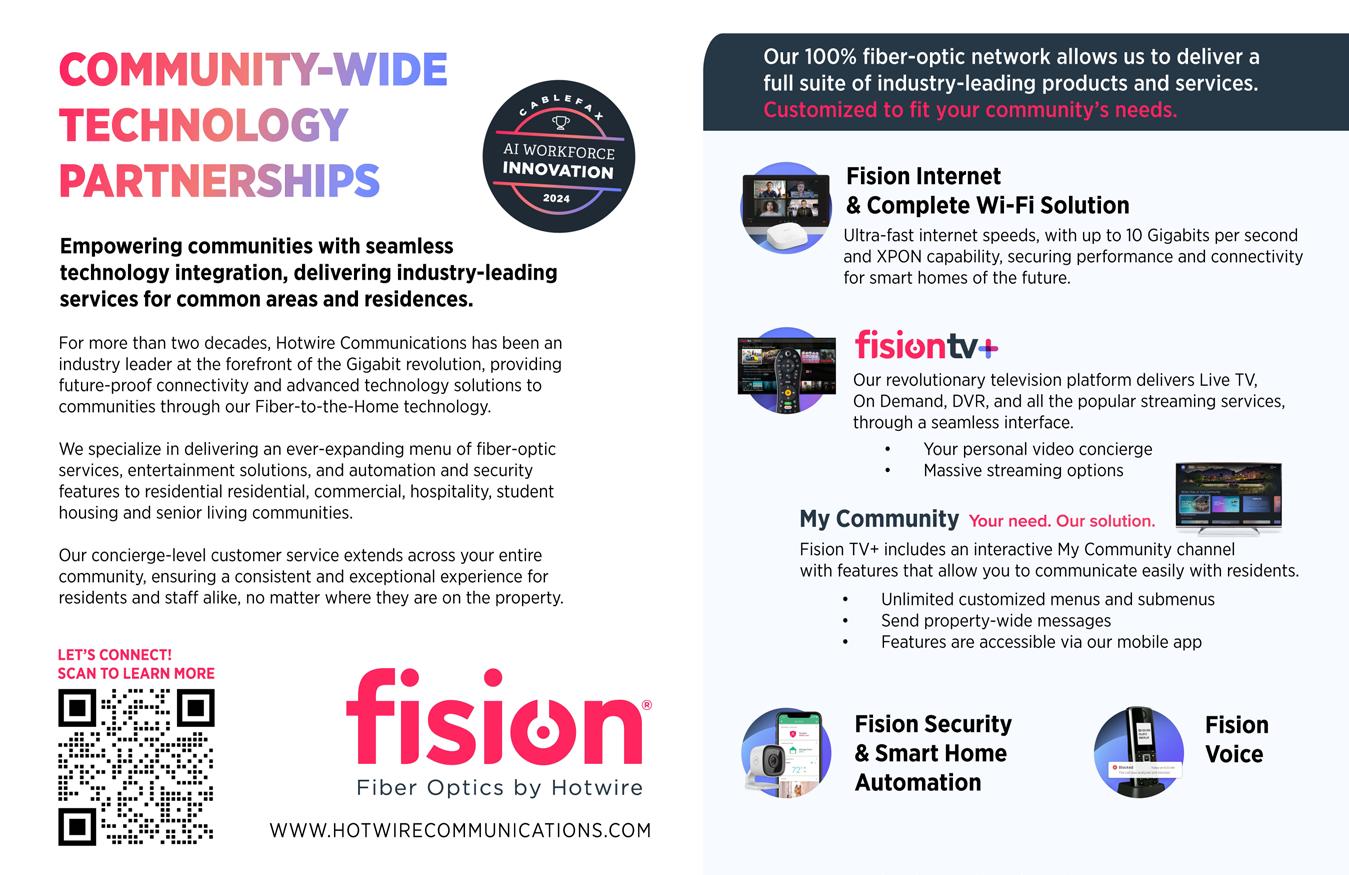

Join us for the ultimate gathering of community association managers, homeowner board members, and business partners at the 2025 CAI Annual Conference and Exposition: Community NOW. Connect with old friends and meet new ones at spectacular networking events, inspiring education sessions, and the world-class exhibit hall showcasing the latest technology and solutions for community associations.
» Strategic Planning
» Artificial Intelligence
» Prepare and Respond to Disasters
» Hybrid and Remote Work
» Advocacy Programs
» Recruiting Board
» Members, Maintenance Strategies
» International Standards
» Insurance Underwriting
The only way for a story to progress is to turn the page. John Ondrasik — the songwriter and performer known as the platinumselling, Grammy-nominated, Five For Fighting—knows this well. In the two decades since his first major single, “Superman (It's Not Easy),” hit the stratosphere, the artist has both evolved and come back 'round full circle. Creativity, if nothing else, is paradoxical.
CAICF invites you to the famous Sea World's Aquatica for a fabulous
beach party! Grab a pair of flip flops and enjoy the beach and games on May 8 from 7:00 - 10:00 pm. Buses depart Rosen Shingle Creek at 6:30 pm. Tickets are $125 each and include two drink tickets, dinner, DJ and fun! Registration to the Chapter Party can be added to your Conference registration or you can register separately through the Chapter's website at www.caicf.org
Full conference registration includes: All education sessions; All general sessions; Wednesday welcome reception (one ticket); Thursday expo & lunch (one ticket); Friday expo & lunch (one ticket); Friday dinner (one ticket); Friday dinner (one ticket); All session recordings on demand after. Members are $899. Third and additional registrants are $849. Non-Members are $999. Homeowner Members are $784. Visit www.caionine.org/2025AnnualConference to register today. For more information, visit the event website and watch the promo video below on YouTube
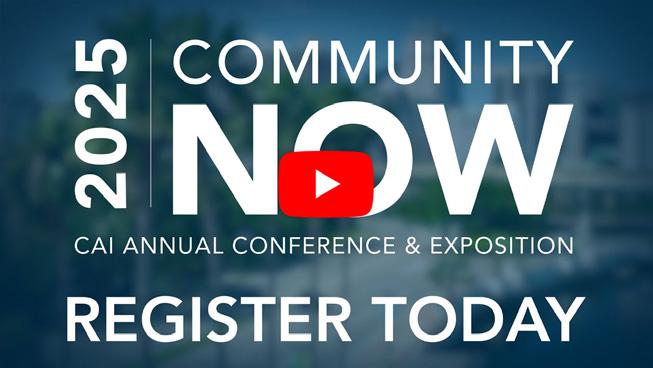

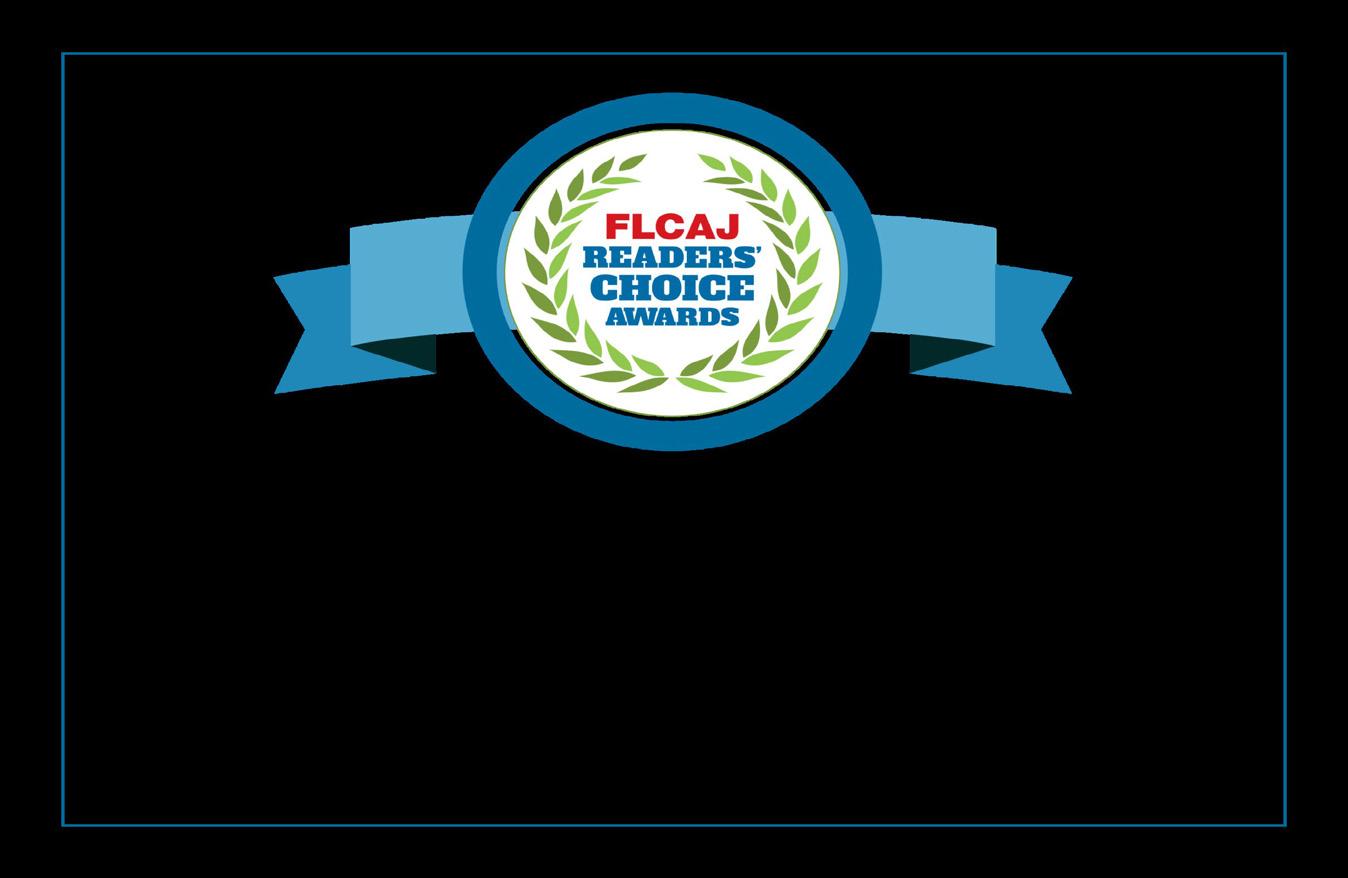
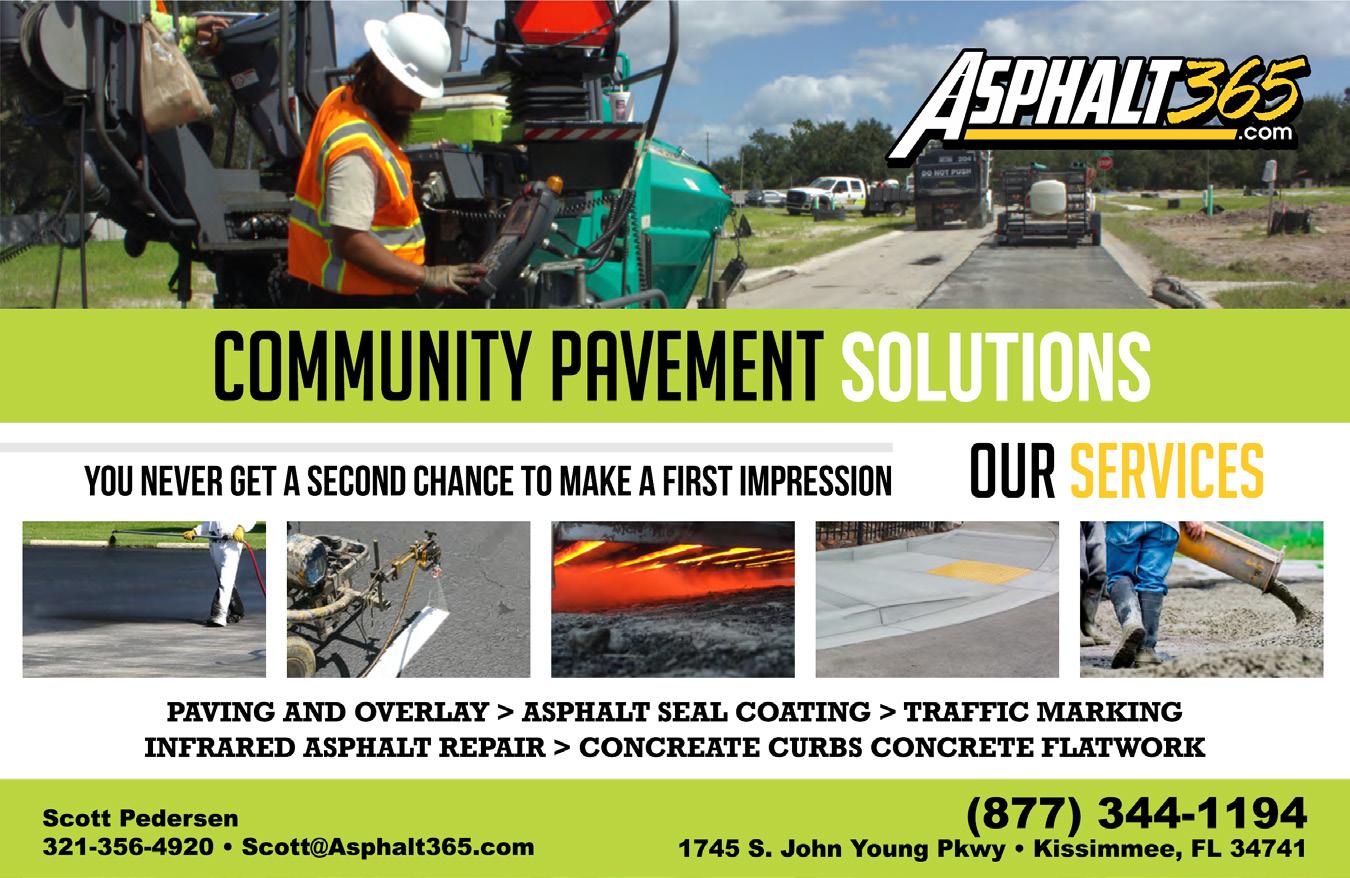

This series is hosted in partnership by Orange County Neighborhood Services Division and the City of Orlando Office of Communications & Neighborhood Relations. The workshops are free to all and offered monthly. Please note, there are no workshops in December.
Cultivating Connection: Inclusive Community Building for Diverse Neighborhoods
Saturday, April 12 from 9:00 am - 1:00 pm
Internal Operations Center 1: 450 E. South Street, Orlando
Discover practical ways to build stronger, more inclusive neighborhoods where everyone feels welcome. This hands-on workshop will teach you how to foster connections across cultural, racial, and socioeconomic lines, engage underrepresented voices, and spark meaningful collaboration. Leave with fresh ideas to create a more connected and united community! Click here to register on Eventbrite.
Bridging the Generations:
Building a Stronger Community Together
Saturday, May 10 from 9:00 am - 11:00 am
Internal Operations Center 1: 450 E. South Street, Orlando
Join us for a unique workshop that aims to bridge the generational gap and foster a stronger, more connected community. Through shared experiences and open dialogue, this workshop will bring together the young and the old, creating opportunities for mutual learning, understanding, and collaboration. Let’s work together to build a community where all generations thrive. Click here to register on Eventbrite.
Asset Based Community Development (ABCD)
Saturday, June 14 from 9:00 am - 11:00 am
Internal Operations Center 1: 450 E. South Street, Orlando
It is all about community building! This workshop is designed to
teach neighborhood leaders and volunteers new strategies through “civic and social networking.” ABCD builds on the gifts of the pillars of an inclusive community: skills, experiences, knowledge, and passions. Participants will learn the ABCD approach of enhancing and supporting a neighborhood organization’s capacity to identify, promote and connect with their neighborhood assets. Click here to register on Eventbrite.
CAI offers many online learning opportunities (click on the dates below to register or obtain more information on these Live Virtual Courses) that lead to professional credentials. View the CAI Courses and Online Catalog for additional resources.
» April 3-4: M-320: High-Rise Maintenance and Management
» April 24-25: M-100: The Essentials of Community Association Management
» May 5-7: M-100: The Essentials of Community Association Management (Orlando; Live Onsite Class before Conference)
» May 6: M-201: Facilities Management (Orlando, FL; Live Onsite Class before the Annual Conference)
» May 6: M-202: Association Communications (Orlando, FL; Live Onsite Class before the Annual Conference)
» May 6: M-203: Community Leadership (Orlando, FL; Live Onsite Class before the Annual Conference)
» May 6: M-400: Contemporary Issues in Community Association Management (Orlando; Live Onsite Class before Conference)
» May 22-23: M-206: Financial Management (Live Virtual Class)
» May 29-30: M-203: Community Leadership (Live Virtual Class)
» May 29-30: M-204: Community Governance (Deerfield Beach)
» June 5-6: M-100: The Essentials of Community Association Management (Live Virtual Class)
» June 12-13: M-202: Association Communications (Live Virtual)
» June 26-27: M-370: Managing Developing Communities (Live Virtual Class)
Carlos Serrano
Relationship Manager 904-755-2523
Carlos.Serrano@Truist.com
Chelsea Ruggiero
Market Manager 407-237-1757
Chelsea.Ruggiero@Truist.com

BUSINESS PARTNER MEMBERS
A&D Security Solutions LLC
Amanda Jean Fagan
Acentria Insurance
Kim Jones
CommonArea Financial
Emily Shure
Community Association Insurance Risk Exchange, LLC
Randy Jones
Exclusive Landscaping Group
Mia Heflin
First Onsite
Lisa Young
FL Specialty Roofing
Amelia Guldi
Global Strategic
Jordan Pearson
Green Valley Landscape Management
Christopher Michael Martin
LACR Landscaping LLC
Natividad Velazquez
Landscape Workshop
Scott Silverstein
Mehrhoff & Wright, The HOA CPA Firm
Jeremy David Mehrhoff
Paradigm Broadband Group Corp.
Donald William Johnson
Persons Services Corp
Samantha Vincenty
re:fab
Matthew Moura
RentRedi Inc.
BUSINESS PARTNERS CONT.
Edward Barone
ResCom Contractors LLC
Paul Thomas Abate
SOCOTEC Consulting, Inc.
Terry Phelps
Vividlux
Nick Armato
WIRE 3
Richard Arceo
NATIONAL BUSINESS PARTNERS
Prosoco, Inc
Mark Donze
Superior Fence & Rail
Todd Paroline
MANAGEMENT COMPANY
MEMBER
Associa Minnesota
Robert Hastings, AMS, PCAM
MANAGER MEMBERS
Cailin Flowers
Erica Watson
Atmos Living Management Group
Kelsey McKee
Angel Alberto Alfonso
Leland Management
Jonathan Haltiwanger
Community Management Professionals
Brittany Lampert
Don Asher & Associates, Inc.
Kaylyn Kearns
Premier Association Management
Chelsea Alpert
MANAGER MEMBERS CONT.
Joseph T. Bullins, CMCA, AMS
Geeta Chowbay
Nadeira Davis, CMCA
Amie Guswiler, CMCA
Diana Marie Johnson, CMCA
Melissa Maldonado
Mark Anthony Michalek
Stacey W. Ramdass
Edward L Rios, CMCA
Graham D Shanks
Evan Valencia
VOLUNTEER LEADERS
Encore at Ovation Community Association, Inc.
Aaron Boyles
Sravan Robbi
Andrew D Singer
Live Oak Reserve Homeowners Association, Inc.
Lisa Prieto
Hugh Rosenblum
The Plantation at Leesburg
Homeowners Association
Pam Rudolph
Nancy Sheahann
Join THE CHAPTER!
Homeowners, Managers, and Business Partners can become members. Visit caicf. org/resources/membership to learn more!

The premier choice for property management, we specialize in serving the finest residential communities With over 3,000+ dedicated team members, we are the preferred service provider for over 500+ associations Our philosophy stays the same no matter where we are –putting the resident first At Castle, we call it Royal Service® To learn more about how Castle Group can serve your community, request a proposal at www castlegroup com/request-a-proposal
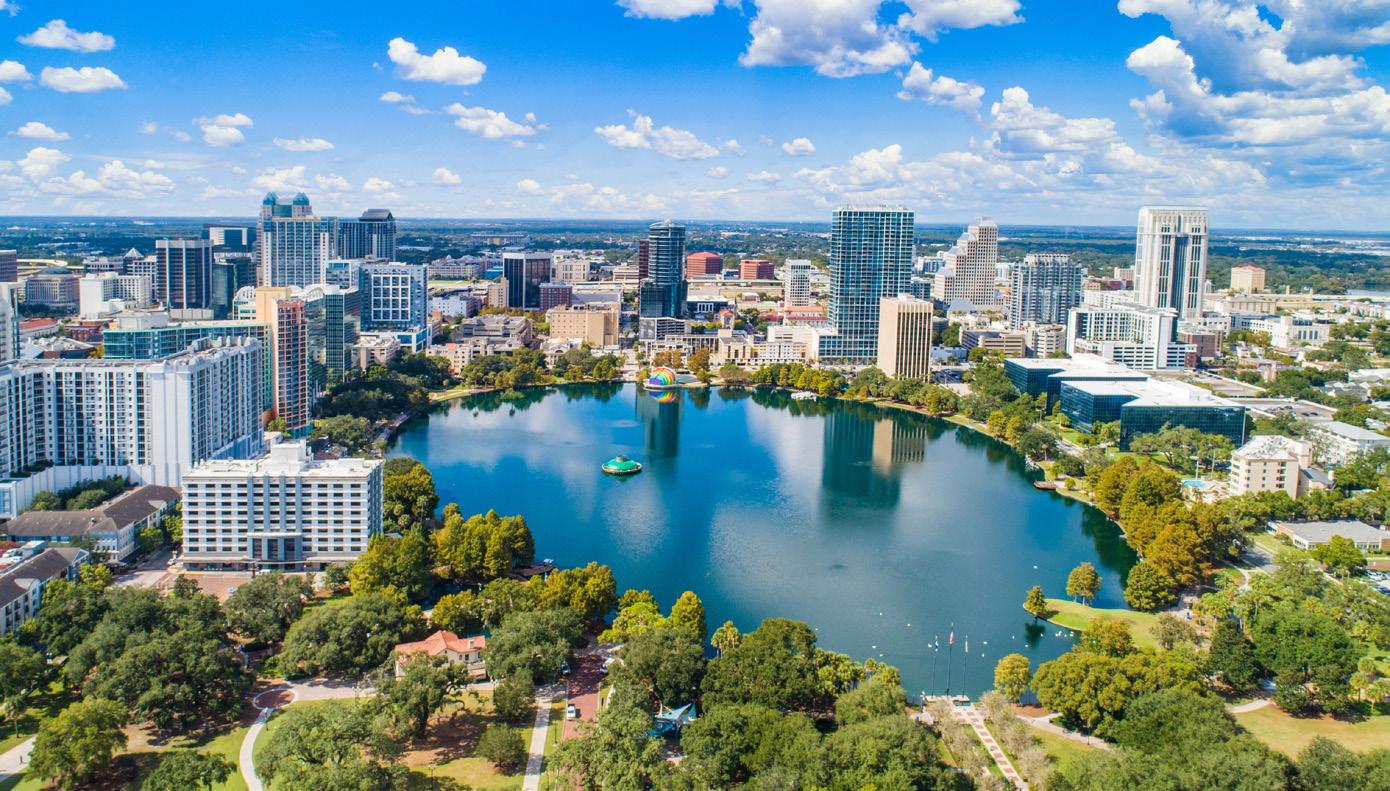
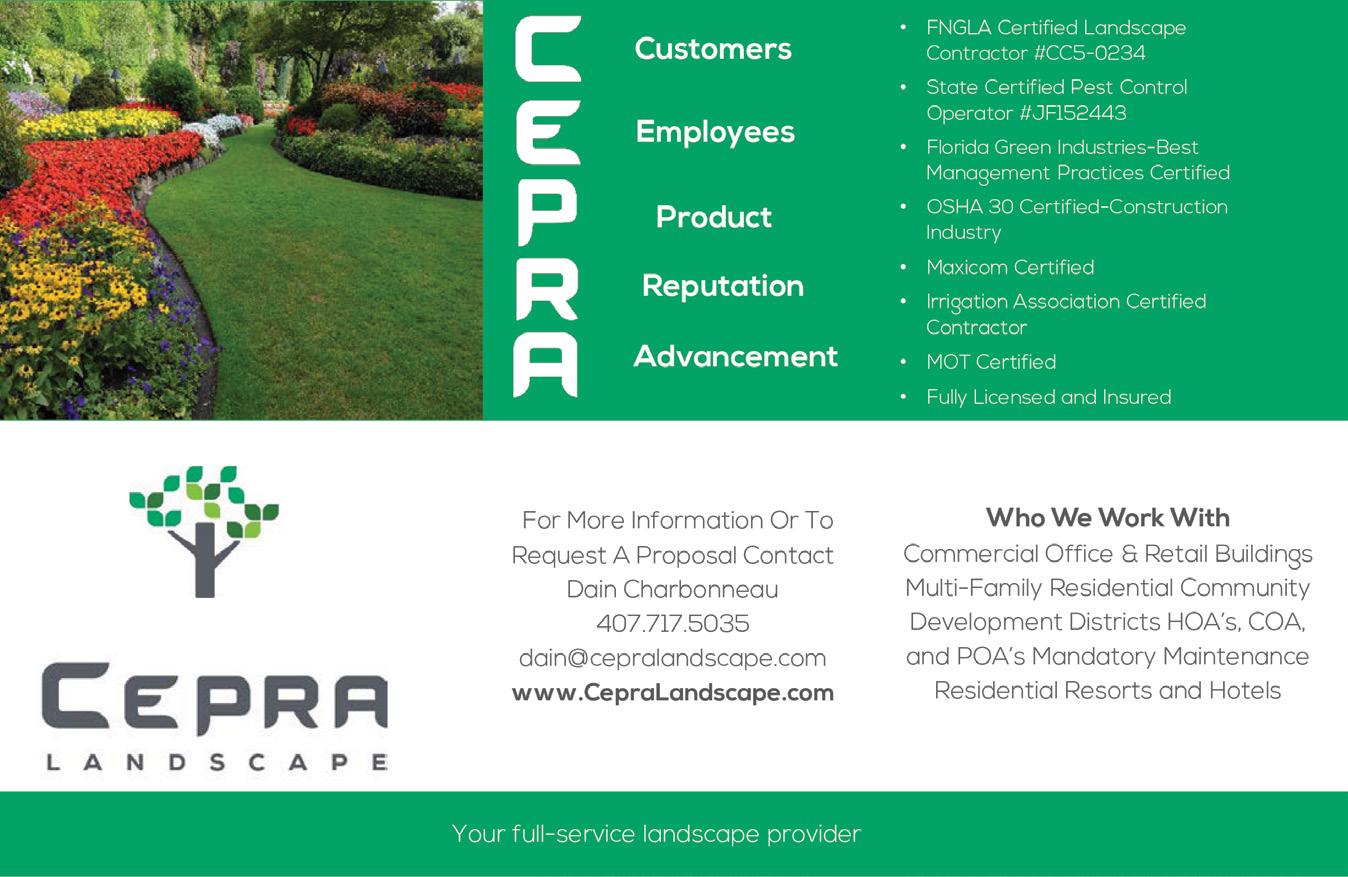

BY COMMUNITY ASSOCIATION INSTITUTE
On March 2, the U.S. Treasury Department issued a statement regarding enforcement of the Corporate Transparency Act.
The official notice says, “not only will it not enforce any penalties or fines associated with the beneficial ownership information reporting rule under the existing regulatory guidelines, but it will further not enforce any penalties or fines against U.S. citizens or domestic reporting companies or their beneficial owners after the forthcoming rule changes take effect either.”
Further, the department said it will be issuing a proposed rule making to narrow the scope of the act to foreign reporting companies only.
This recent action is interpreted to mean the Corporate Transparency Act and its reporting requirements are no longer in effect for U.S. citizens or domestic reporting companies, including all applicable community associations.
We thank the many CAI advocates who contacted their members
of Congress to express their opposition to the act’s reporting requirements for community associations. Your voices were heard!
On October 24, 2024, CAI’s preliminary injunction request was DENIED by the federal judge in this case. While this decision was not the outcome CAI had hoped for, it does not mark the end of CAI’s efforts. CAI appealed the court’s denial of the preliminary injunction request on November 4, 2024, and on November 12, 2024, filed its opening brief of the appeal in the Fourth Circuit urging a pause on reporting requirements for community associations while this lawsuit is adjudicated. The Government filed it response to CAI’s appeal on February 7, 2025. CAI filed its reply on February 28, 2025.
CAI’s other lobbying and advocacy efforts continue on Capitol Hill seeking both a one-year delay of implementation of the CTA’s reporting requirements and an exemption for community associations. The lawsuit itself is continuing to go through the legal process even as the preliminary injunction decision is being appealed.
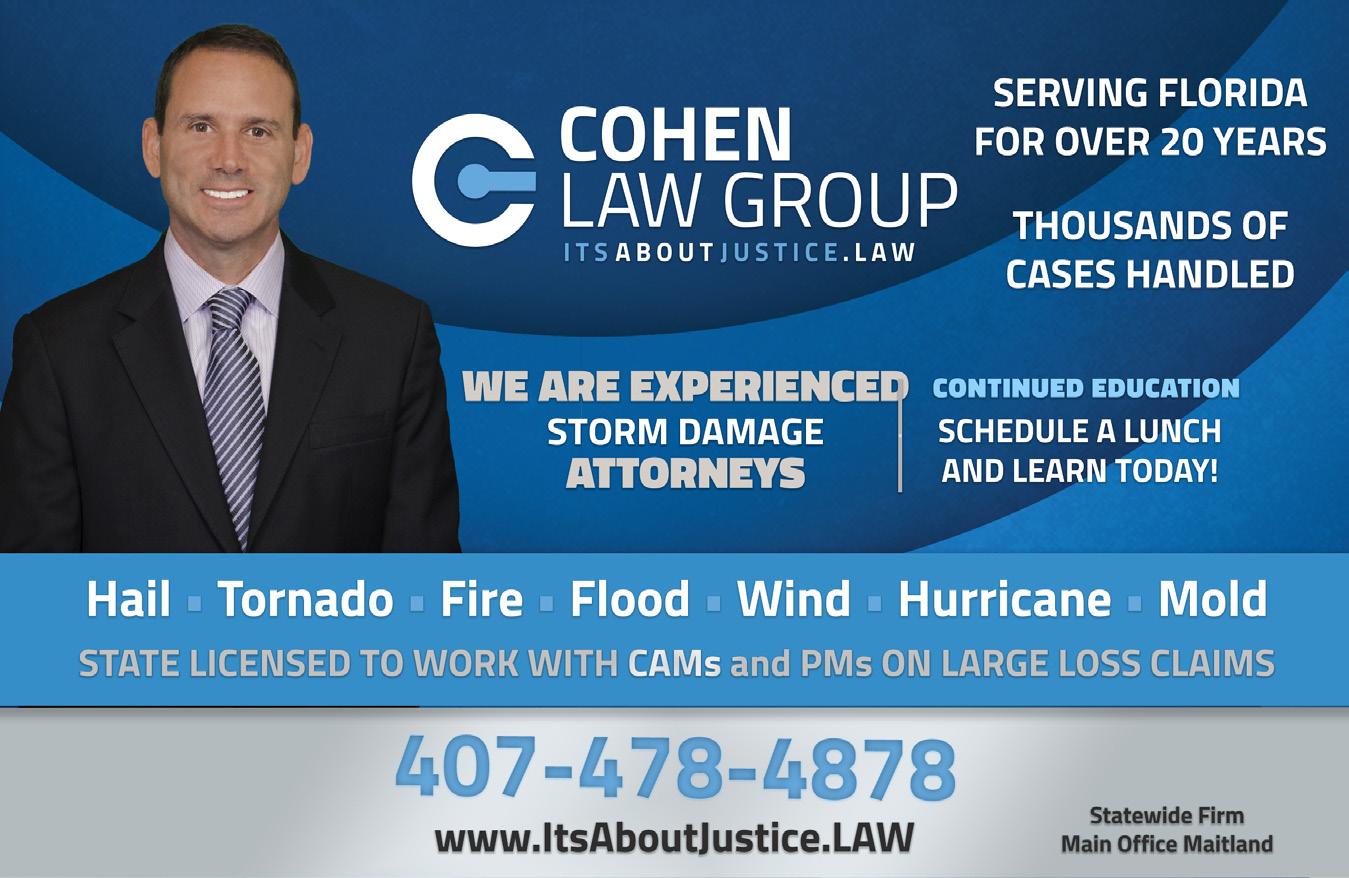



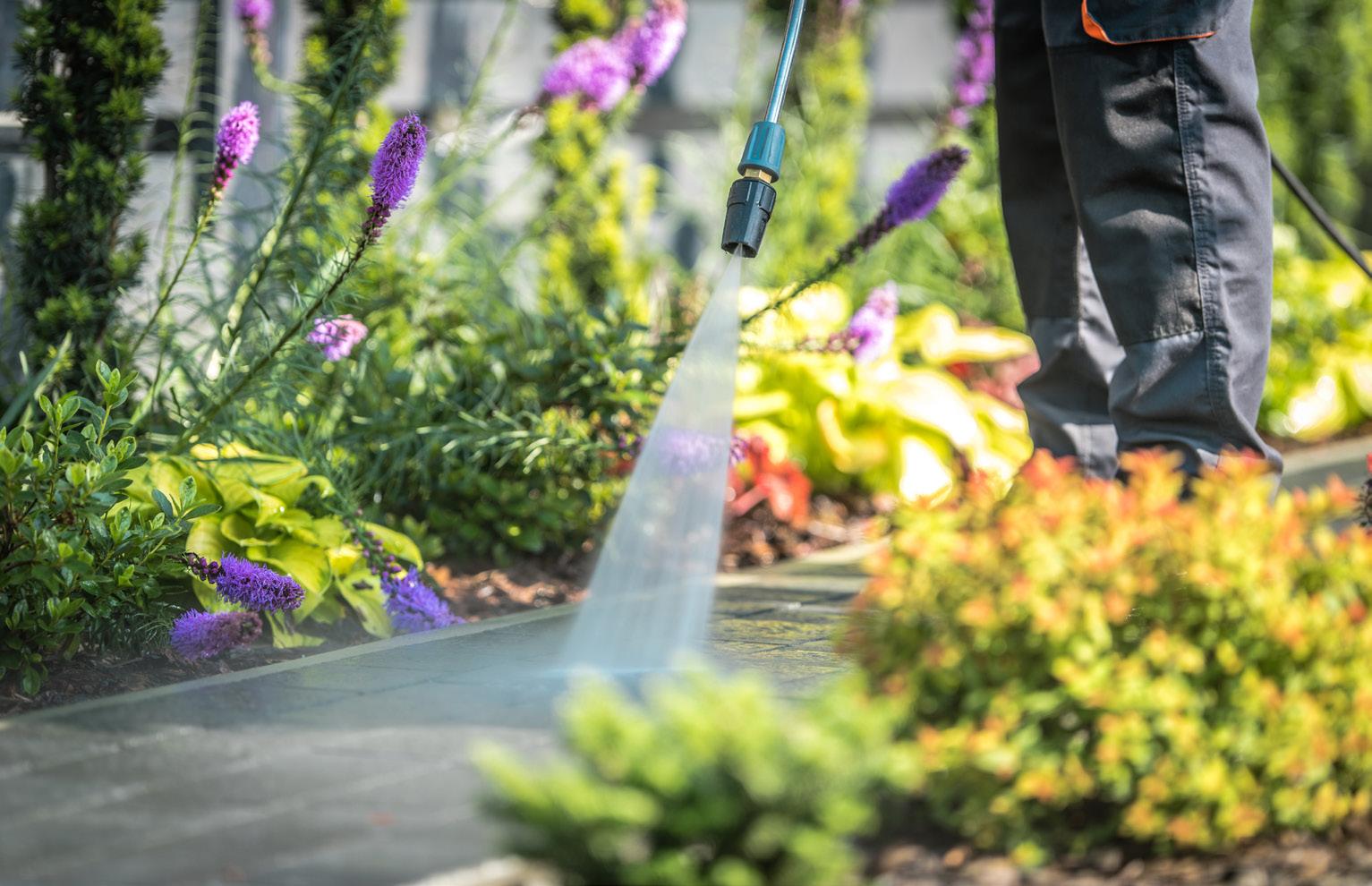
BY DIANE BRASWELL, CEO, ARTEMIS LIFESTYLES
Spring is a time for renewal. Growing up in the northeast, I fondly remember the joy I experienced seeing the first blooms pop out of the snow-covered ground and anticipating the purple and yellow flowers. This was a time to start again, and even at a youthful age, an indication of a new beginning.
Spring cleaning, to me, is more than just cleaning up physical spaces. It is also a time to organize the many aspects of our lives, both personal and professional. Spring signifies a time to start afresh. At Artemis, we take the same approach, targeting the beginning of the second quarter to work on process and procedure, helping our communities develop essential maintenance programs and sharing overall timesaving and efficiency tips with our team. The following are my spring-cleaning suggestions for community members.
Check your community website for correct information and ensure that the updates are timely. Add any important information regarding
community events, including the annual and budget meeting.
As busy board members, emails, paperwork, and other documents can quickly pile up. Use springtime as an opportunity to clean up your email inboxes. It is time-consuming, but the results will be well worth the effort.
While you are clearing out your inbox, you can also do some other digital spring cleaning. Go through old files on your computer, delete unnecessary documents and folders and cancel any unwanted opt-in email lists.
Make spring the time you go through all your passwords and


update. To ensure cyber safety, make unique passwords for each account, never utilize personal information in a password, and use a combination of symbols, numbers and characters. One of the best ways to create a complex password is to utilize a sentence or passphrase. For example, “My dog is 3 years old!” This password is easy to remember and has special characters and a number. Try it and see what you think.
Consider creating specific folders to sort your documents to make things more efficient. That way, you can easily access your work without having to search through hundreds of documents to find what you need.
A walkthrough of your property with your association manager will allow you to inspect and identify any problems that started during wintertime, as well as identify any new projects you would like to initiate.
Spring is a wonderful time to send a newsletter to your community reminding them of compliance concerns throughout the
neighborhood. Host a community yard sale so that members doing their spring cleaning can conveniently turn their trash into someone else’s treasure.
However you view spring cleaning, always remember to take time to enjoy this beautiful season in your lovely community, as those are the moments that will truly inspire you to accomplish many of your springtime tasks.
Happy cleaning!

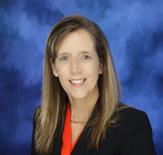
Diane Braswell is the CEO of Artemis Lifestyles. She has a proven executive management track record and over 20 years of experience in the Florida association management industry. For more information about Artemis Lifestyles, visit www.ArtemisLifestyles.com.


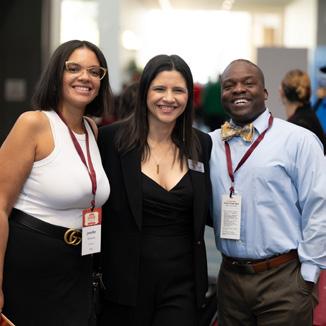
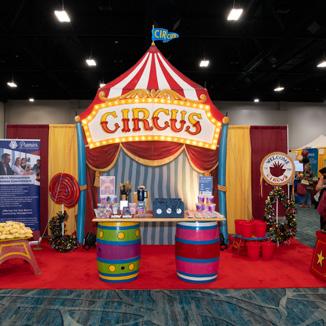

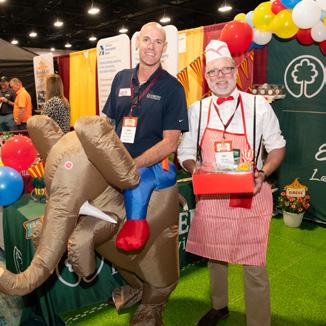

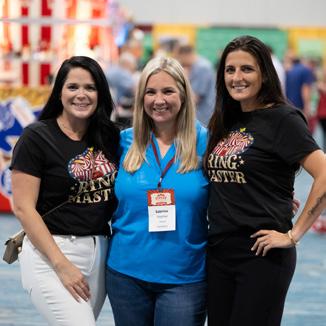

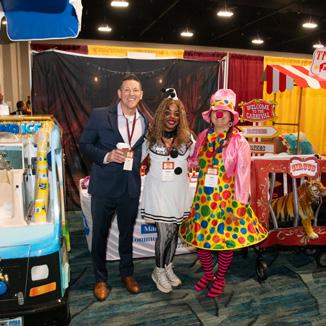
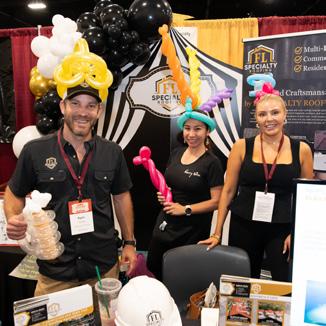
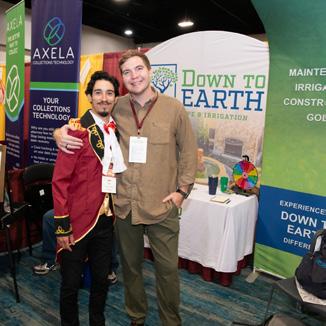
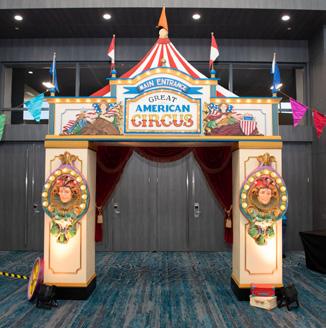

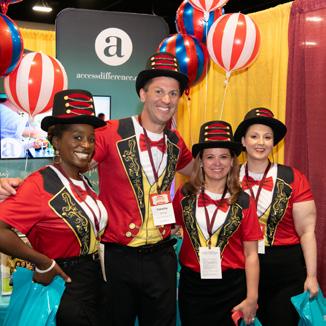
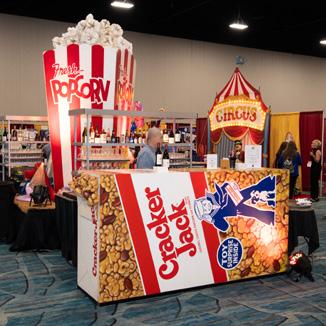
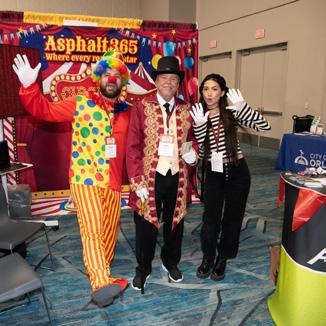
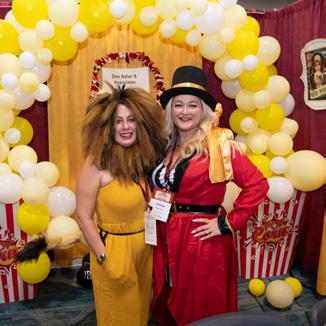
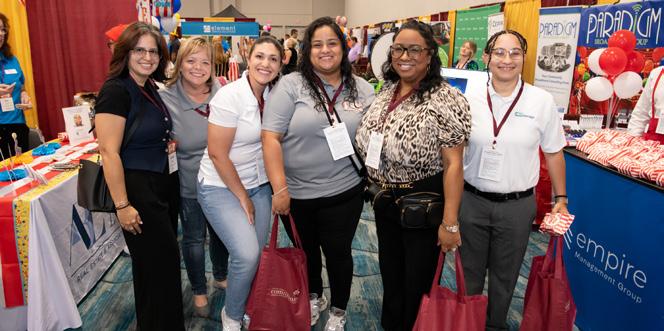
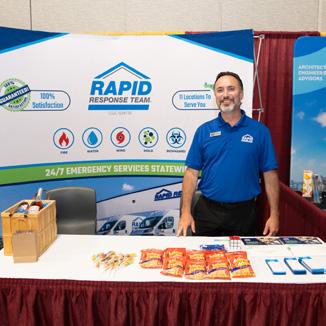
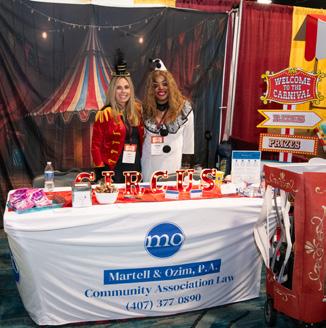

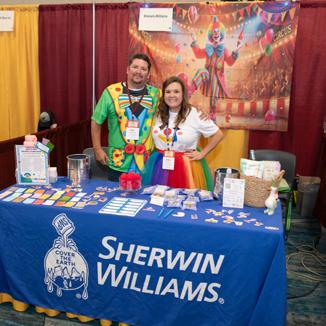
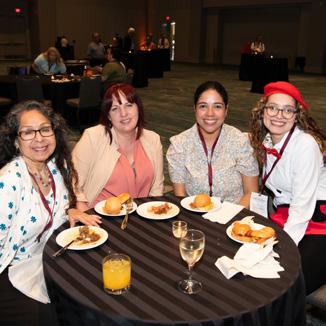
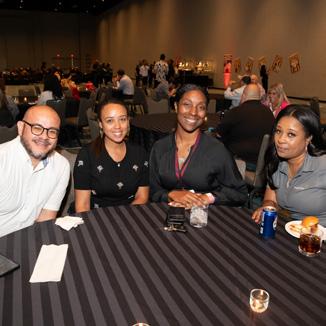
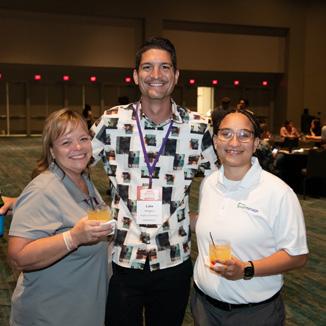
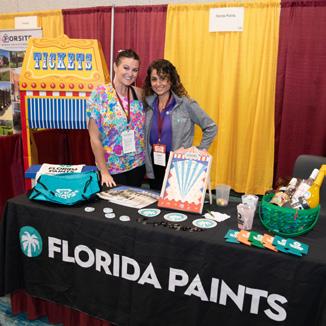
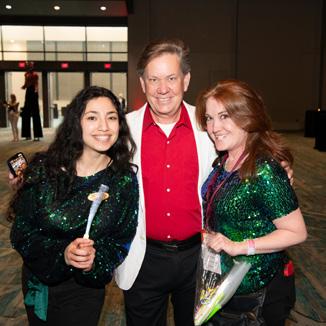
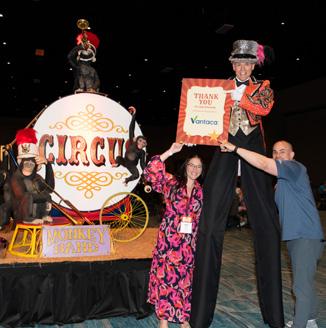

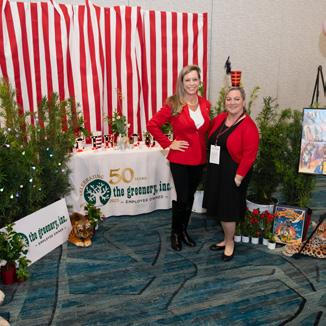
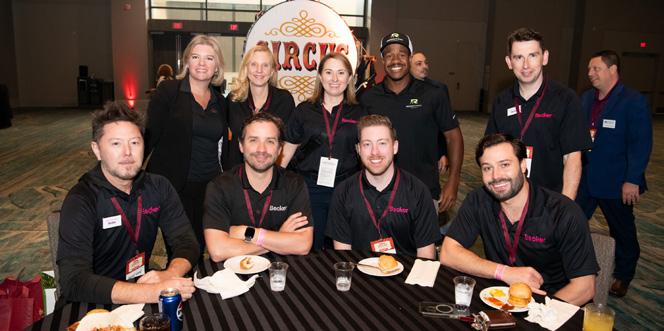
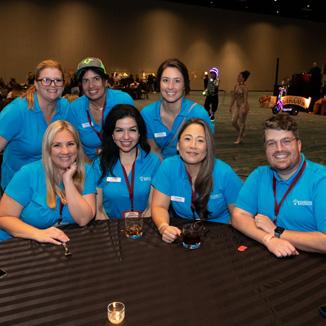
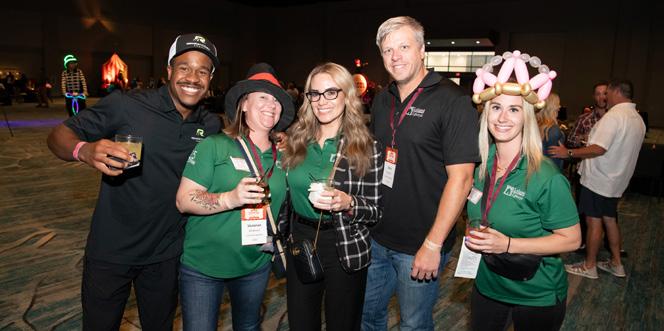

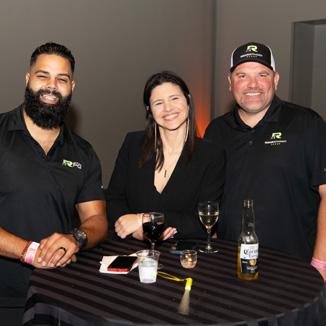
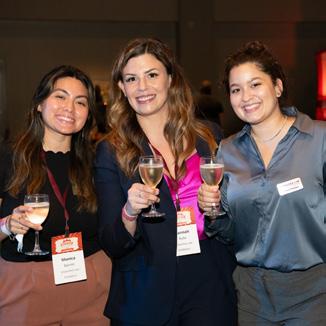
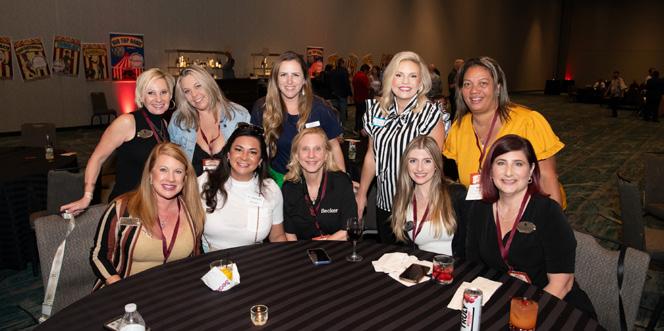

BY VENESSA GRULLON, CITY OF ORLANDO OFFICE OF COMMUNICATIONS AND NEIGHBORHOOD RELATIONS
trong, connected neighborhoods thrive when local leaders are equipped with the right tools and knowledge. That’s exactly what iLead has been accomplishing since its launch in 2014. This innovative program has transformed neighborhood leadership in Orlando, empowering residents to create lasting change and build more engaged communities.
iLead is more than just a leadership training program—it’s a catalyst for real neighborhood impact. By offering training guides, an intensive leadership series, and an active alumni network, iLead has helped neighborhood leaders elevate their outreach, plan effective events, and inspire new leadership. The results speak for themselves.
• Training Guides: With more than 25 easy-to-use guides, leaders gain access to essential resources covering board operations, communication strategies, event planning, and more. These practical tools have enhanced the effectiveness of neighborhood associations across the city.
• Six-Week Leadership Series: This exclusive program, limited to 12 participants per session, fosters deep connections and dynamic collaboration. Over six weeks, board members from different associations sharpen their leadership skills, explore community-building strategies, and develop creative partnerships. Upon completion, each participating association receives $250 to invest back into their community. More importantly, graduates leave with confidence, practical skills, and a supportive network that extends beyond the program.
• Alumni Network: iLead doesn’t stop at graduation. The program’s alumni network ensures ongoing engagement and mentorship. These dedicated individuals continue to serve as community representatives, sharing valuable insights, collaborating on initiatives, and strengthening neighborhood bonds. Regular alumni gatherings provide a platform for exchanging ideas, addressing challenges, and celebrating successes.
Over the years, iLead has empowered countless neighborhood leaders who have gone on to make meaningful contributions in their communities. By fostering informed, connected, and engaged leadership, the program has played a crucial role in enhancing Orlando’s neighborhoods. iLead graduates are not just participants— they are change-makers who actively shape the future of their communities.
Orlando’s neighborhoods are stronger, more resilient, and better connected thanks to iLead. If you’re ready to be part of this transformative movement, learn more at orlando.gov/iLead

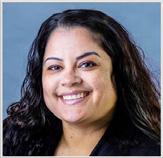
Venessa Grullon is a dedicated Neighborhood Relations Coordinator for the City of Orlando with a background in justice reform advocacy, community organizing, and public outreach.
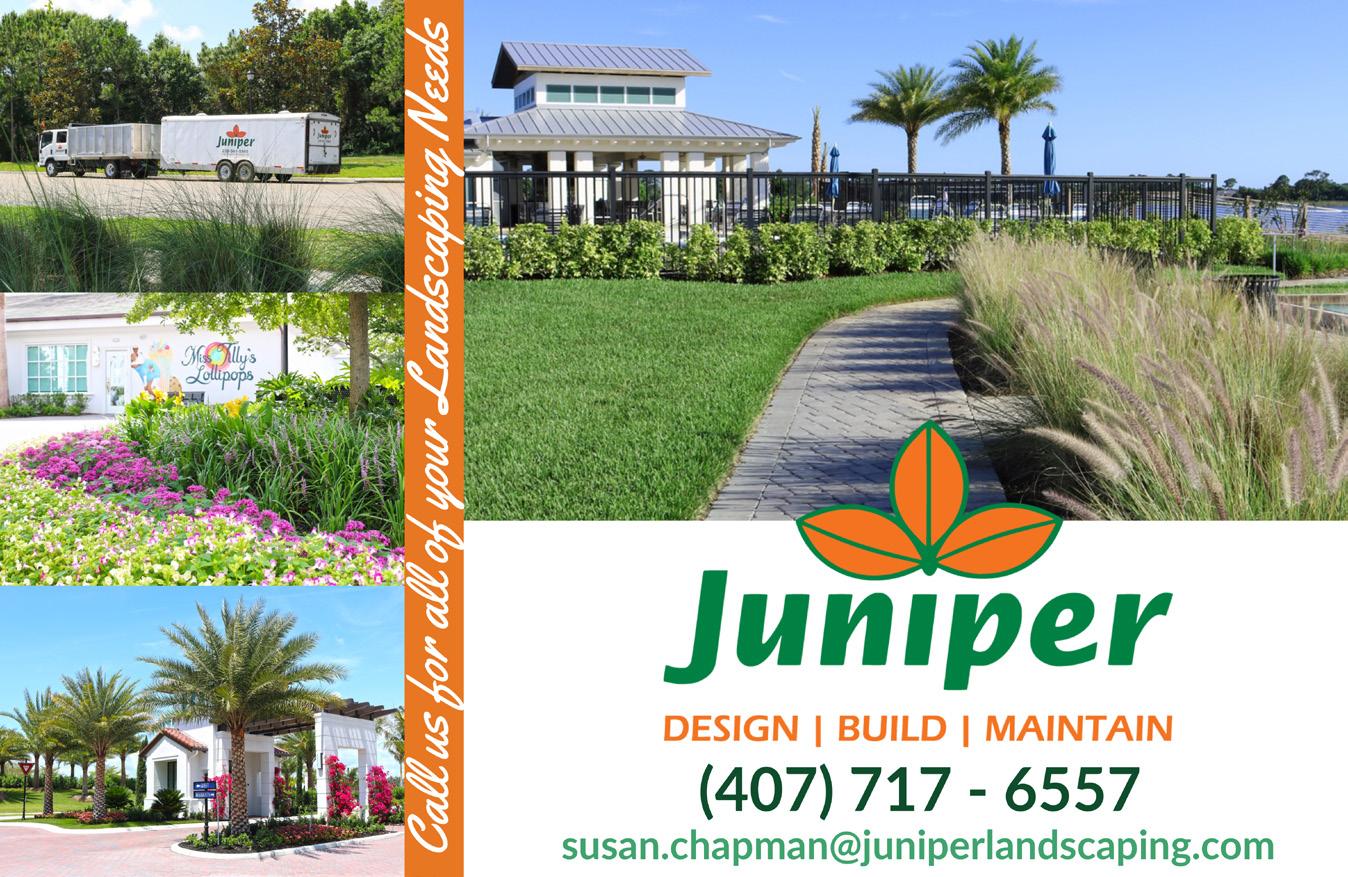
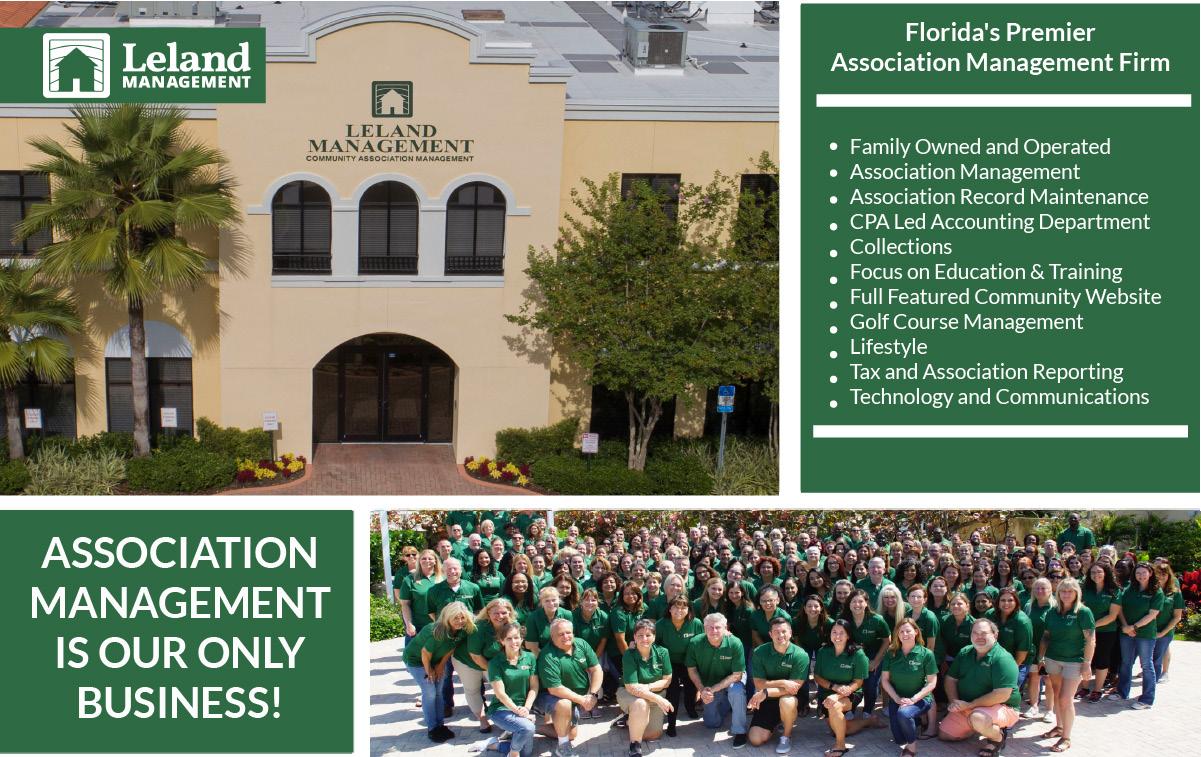
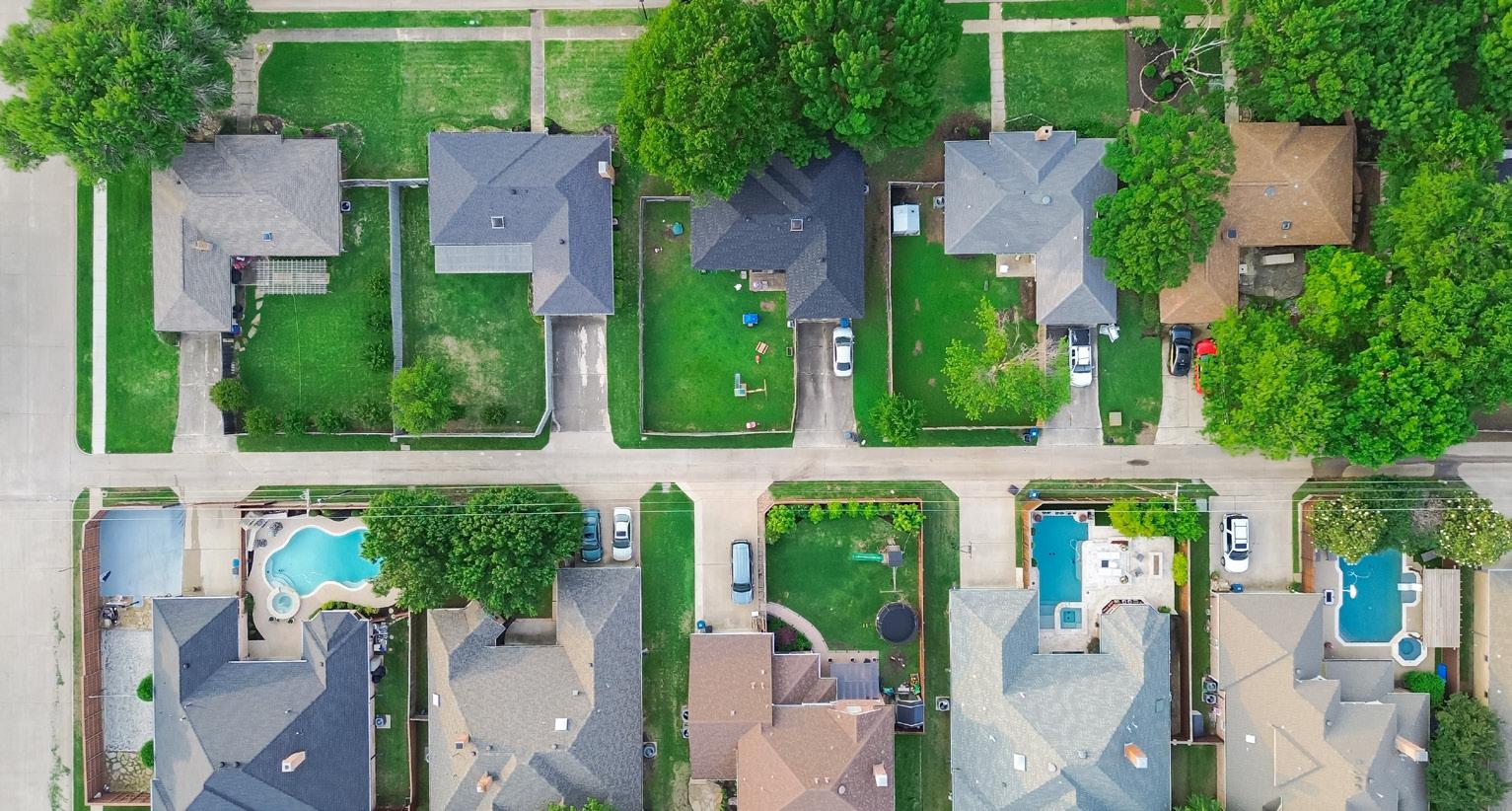
SUBMITTED BY NICK BRENNEMAN, SE REGIONAL ACCOUNT MANAGER, RESERVE ADVISORS
When it is budget time, many associations and boards are updating their reserve studies. Many others have never had a professional reserve study and are now considering investing in their first one. Questions may arise such as, “What is the purpose of a reserve study?” or “What are the benefits to the association?” or “How do we go about having a reserve study conducted for our association?”
First, it’s important to understand what a professional reserve study is and how an association benefits from having one. A reserve study is an independent long-term analysis (generally 30 years) of association property that determines the amount of funds required to repair or replace the common elements of an association as they wear out over the life of the property. Examples of common elements include exterior walls, roofs, paving, elevators and swimming pools.
A professional reserve study is a key financial planning tool that helps the board fulfill its fiduciary responsibility to maintain the common property of the association.
The American Institute of Certified Public Accountants (AICPA), in its Audit and Accounting Guide, Audits of Common Interest Realty Associations, states that the association’s “primary duties are to maintain and preserve the common property.” The professional reserve study becomes the blueprint for the ongoing financial wellbeing of the association that current and future boards rely upon. Legislation among the states has increased dramatically in recent years, clearly defining the fiduciary obligations of boards and managers, and funding of reserves. Among the states with legislation regarding reserves and reserve studies are California, Florida,
Illinois, Michigan, Nevada and Virginia. The trend is certainly toward more stringent requirements. The purpose of these laws and the AICPA Audit Guide is to protect the investment of current and future association homeowners.
Determining an appropriate amount to reserve is dependent upon the amount of common property and that property’s condition. A reserve study conducted by a qualified firm will include a complete inventory of all common elements subject to repair or replacement, the useful lives of the common elements and, more important, their remaining useful lives, a determination of future replacement costs by element and by year, and relatively stable reserve budget recommendations for at least each of the next 30 years.
Some firms provide more insight by documenting the current condition of each element. Additionally, the Reserve Study Consultant can analyze maintenance problems and use his or her expertise to provide engineering recommendations that will extend the lives of the common elements, thus saving the association money.
Licensed engineers with experience in performing reserve studies possess the best qualifications. Their experiential knowledge in construction and building systems is the foundation for providing you with an objective, independent opinion for capital repairs and replacements over the life of your association.
Continued on page 24


An accurate reserve study ensures that adequate reserves for replacement will be available at any point in time, especially during those critical periods of heavy capital expenditures. Properly funded reserves also treats current and future homeowners fairly. Overfunding of reserves suggests that current homeowners are paying more than their fair share. Reserving too little results in a deficit position or insufficient funds to cover the replacement of major items like a boiler or roof. The board is then left with the unpleasant task of special assessing the homeowners or borrowing. With a professional reserve study, claims of financial mismanagement by current or future owners are greatly reduced because the board exercised sound business judgment and planned responsibly with expert advice.
Directors and officers liability insurance helps protect board members from personal liability. However, litigation can still be very costly, time consuming and stressful. It is not uncommon for litigious issues to arise years after one’s tenure as a board member is concluded. An independent reserve study also satisfies the requirements of the AICPA Audit Guide. The audit guide states that disclosures should be made regarding the determination and adequacy of reserves. Additionally, the professional reserve study serves as the foundation for meeting state statutes that call for adequate or reasonable reserves.
The marketability of homes is also strengthened by showing prospective buyers and their lenders that the association is properly managed. Today, more than ever, buyers and their lenders are more closely scrutinizing the association’s budget, current reserves, and long-range projected expenses. Many banks also require independent reserve studies as a requirement for approving mortgages.
It’s important to update a reserve study every few years. The reserve study is a financial snapshot of the association. Periodic updates account for extended or diminished remaining lives of common elements due to factors such as maintenance practices, weather conditions, actual changes in inflation factors that affect local market rates for materials and labor, changes in fund interest earned, and changes in association property due to additions and deletions.
The updated reserve study will also help maintain and confirm the financial well-being of the association well into the future. This ensures that the association will have an accurate, perpetual financial planning tool that the current and future boards can rely upon with confidence.
Selecting the right Reserve Study Consultant requires several considerations to ensure you obtain the service that best fits with
the long-term goals and objectives of your association.
1. Develop a List of Potential Consultants – Contact Trade Associations (such as Community Associations Institute) for a list of qualified engineers. Ask other consultants such as your lawyer or accountant. While they are not involved in these decisions, they will likely have other clients that have hired a Reserve Study Consultant.
2. Obtain Written Proposals – Make sure the fee quoted is a total fee. Ask the consultant to spell out the nature and estimated cost of expenses if the proposal quotes a flat fee plus expenses. Also, obtain an upper limit on the cost so the total cost will not exceed the association’s budget.
3. Review Each Firm’s Qualification – Focus on whether the firm has the necessary experience, specializes exclusively in reserve studies for associations, and is a member of CAI and the American Association of Cost Engineers (AACE).
4. Get References– Many people believe that vendors “stack the deck” with favorable references. A small amount of probing on your part will provide invaluable insight. Ask references open-ended questions like, “Why did you select the firm you chose?” and “What did you like best and least about the firm?” While the reference might be pleased with the service performed, it may be for reasons that are unimportant to you.
Professional reserve studies are a key component in helping current and future association boards meet their fiduciary responsibility and comply with state statutes and the AICPA Audit Guide. Additionally, reserve studies minimize monthly homeowner contributions while minimizing the risk of special assessments, reducing claims of board mismanagement, and providing a valuable selling tool for prospective buyers and their lenders.
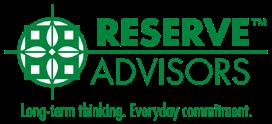

As the Southeast Regional Account Manager at Reserve Advisors, Nick is responsible for developing long-term client relationships and providing industry-leading reserve study consulting services. Since joining Reserve Advisors in 2010, he has worked with hundreds of management companies throughout the Southeastern United States, ensuring that their associations receive comprehensive reserve studies, customized funding solutions, and consultative support allowing community leaders to understand and implement their plan for long-term financial sustainability. For more information, visit www.reserveadvisors.com.

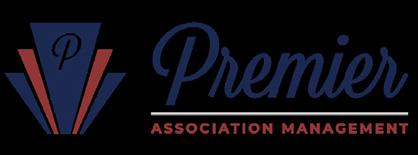

BY MICHAEL CAPORALE, DIRECTOR OF SALES ASSOCIATION DEVELOPMENT, BLUESTREAM

In today’s digital world, reliable, high-speed internet is no longer a luxury—it’s an essential service that impacts property values, resident satisfaction, and even a community’s competitiveness in the real estate market. Associations across Florida are recognizing the need to future-proof their communities with fiber-optic internet.
The way we live has changed dramatically. More residents are working from home, streaming entertainment in ultra-high definition, using smart home technology, and relying on multiple connected devices. Traditional cable-based internet often struggles to keep up with these demands, leading to slow speeds, buffering, and frustrated residents.
Fiber-optic internet solves these issues by delivering lightning-fast speeds, unmatched reliability, and superior bandwidth—even during peak usage times. Unlike older networks that slow down as more users connect, fiber ensures that every household in a community enjoys a seamless online experience.
Beyond just improving daily life, fiber internet has a direct impact on property values. Studies show that homes with fiber broadband can sell for 3-5% more than those without access to fiber.
For properties, this added value makes a fiber investment one of the most cost-effective ways to enhance a community’s desirability. Just as buyers or renters seek out homes in top school districts, they
are increasingly prioritizing properties with fast, reliable internet— especially in today’s remote-work environment.
Fiber-optic networks are also built to last. Traditional copperbased networks degrade over time, require frequent maintenance, and are more vulnerable to weather-related disruptions. Fiber, on the other hand, is resistant to interference, designed to last up to 50 years, and requires minimal upkeep—saving associations money in the long run.

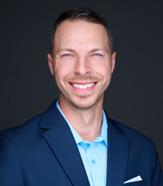
At Blue Stream Fiber, we partner with communities to build world-class fiber infrastructure with no upfront costs. To learn more about Blue Stream Fiber, our fiber infrastructure, and whether your community qualifies to have fiber built at our cost, please visit bluestreamfiber. com/bulk. Mike Caporale is the Director of Sales Association Development at Blue Stream Fiber, working with communities across Orlando and North Florida to deliver tailored telecommunications solutions. With 13 years of experience in network infrastructure, sales, and strategic planning, he has held key roles at Spectrum, Verizon, and Frontier, driving fiber development and connectivity. An active member of the CAI Central FL Golf Committee, Mike is a proud North Lakeland resident, devoted husband, and father to his two-year-old son.


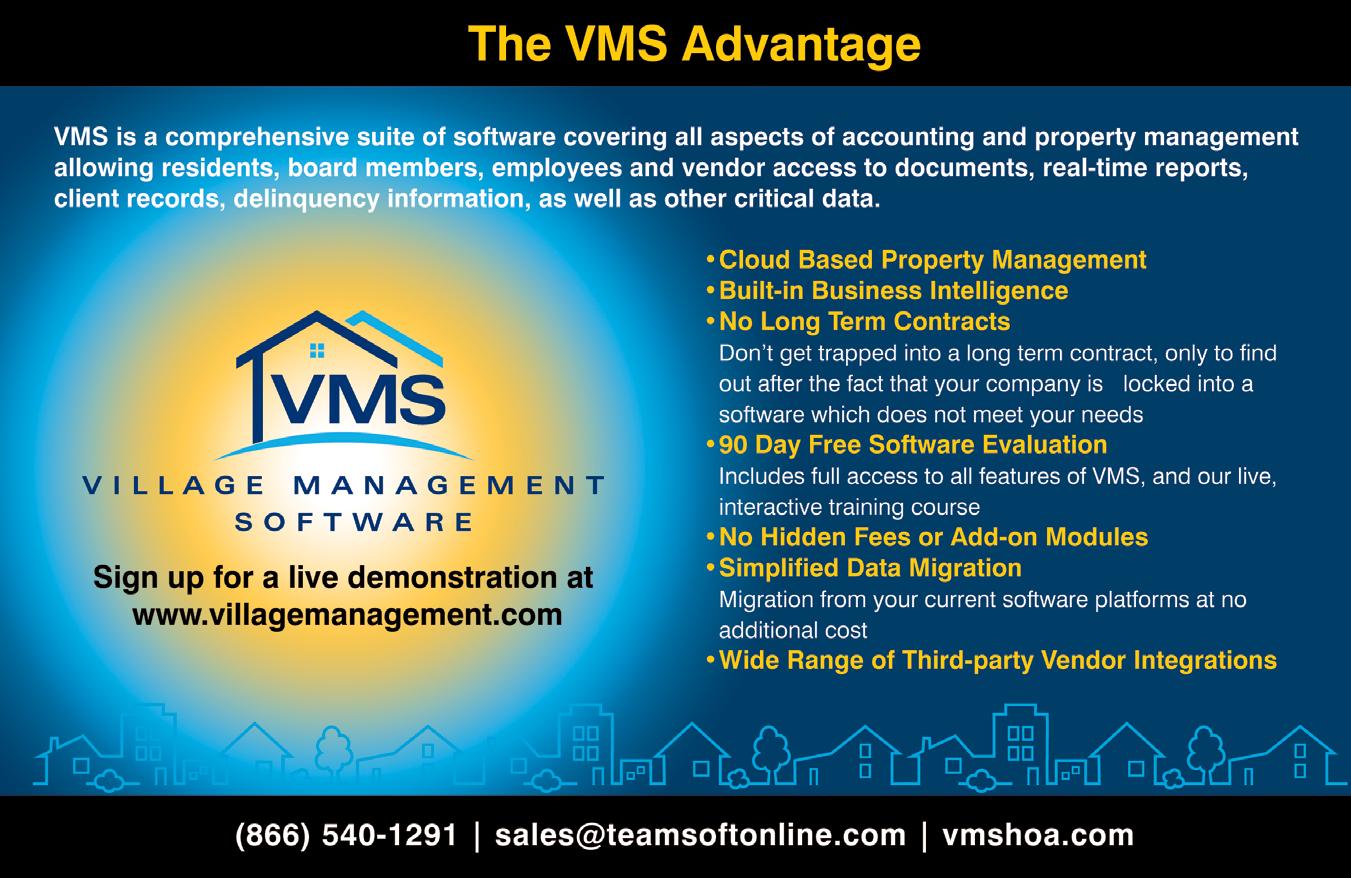

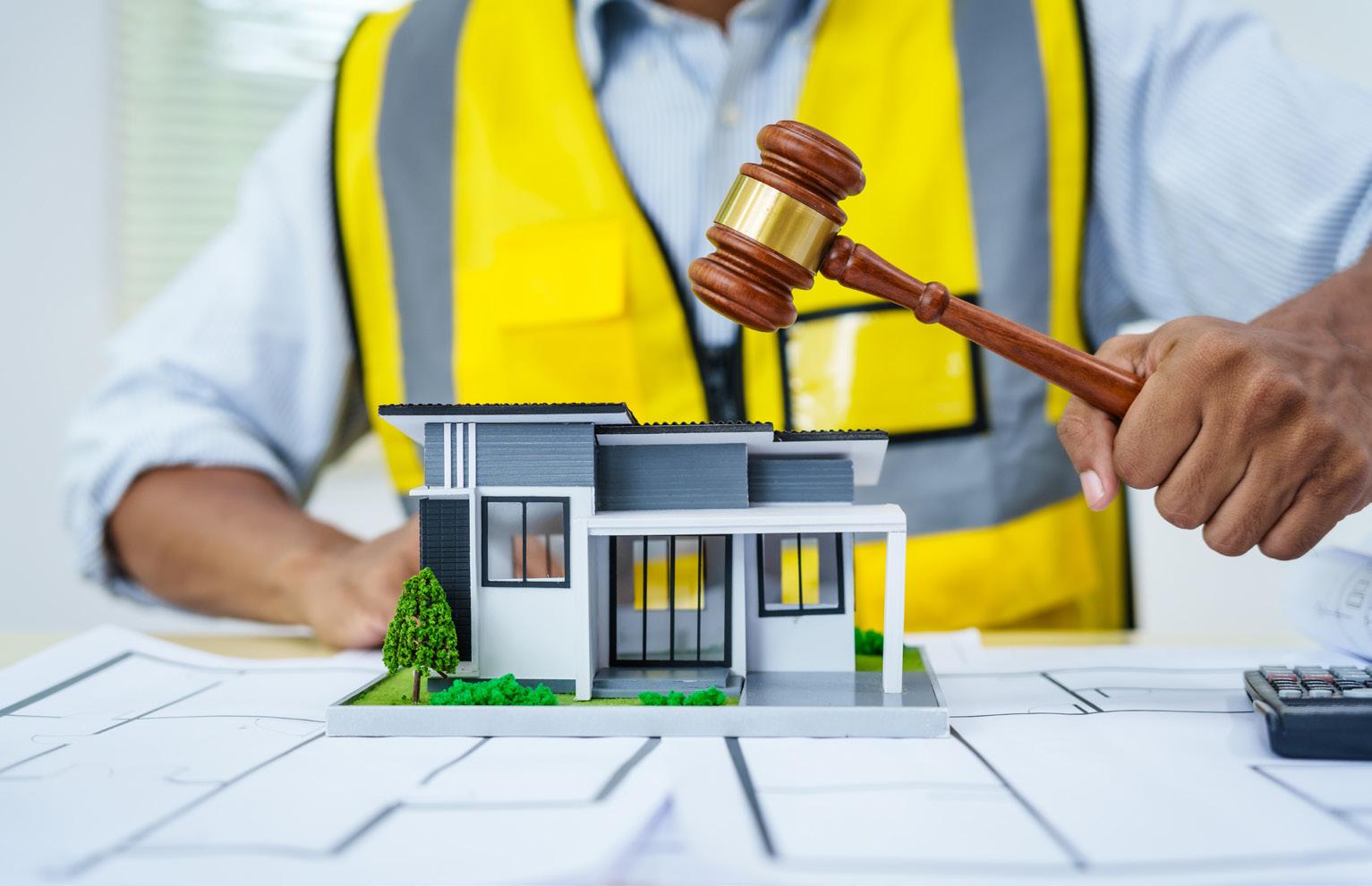
BY JAKE HERREL, ESQ., BECKER
For homeowners associations in Florida, construction defects are more than just an inconvenience—they can threaten property values, create unsafe living conditions, and impose significant financial burdens on homeowners. When defects arise due to faulty construction, poor workmanship, or code violations, the association must decide how to address these issues. In many cases, legal action may be the best or only viable path forward.
However, Florida law typically requires a homeowner vote before an association can pursue litigation for amounts in excess of $100,000, which threshold amount is usually exceeded in a typical community-wide construction defect matter. This means individual homeowners must weigh the pros and cons of pursuing legal action. While some may worry about short-term marketability or legal costs, the reality is that failing to take action can lead to far greater financial and structural problems down the line.
Before voting, homeowners should carefully consider the long-term benefits of litigation and the risks of inaction. In most cases, pursuing legal action is not just a reasonable option—it’s the responsible choice.
One of the primary concerns for any homeowner is the value of their investment. Construction defects—whether they involve water intrusion, structural weaknesses, or code violations—can
significantly diminish property values if left unaddressed. Even if the defects are not immediately visible, they can lead to long-term deterioration, making units or common areas less desirable and more expensive to maintain.
Consider the alternatives:
» If defects are ignored, future buyers will be hesitant to purchase in a community with known structural issues.
» Lenders may be unwilling to approve mortgages for properties with significant unresolved defects.
» The cost of repairs may eventually fall entirely on homeowners if legal action is not pursued.
Taking legal action sends a strong message that the association is proactive in preserving property values and ensuring the community remains desirable for years to come.
A common concern among homeowners is whether pending litigation will make it harder to sell their homes. While it is true that some buyers and lenders are wary of communities involved in lawsuits, the bigger concern is usually whether the underlying defects will be addressed.

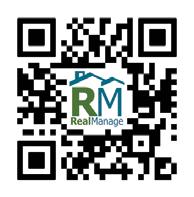

Sherwin-Williams understands the needs of HOAs and has the products and services to ensure long-lasting curb appeal and easy maintenance. From premium paints that provide performance and protection to color design services, on-site assistance, maintenance manuals and more — we’re here to help throughout the state of Florida.
Ask yourself:
» Would a buyer prefer a home in a community actively fixing construction defects or one ignoring them?
» Would I personally buy a home knowing the association refused to take legal action to fix major problems?
In many cases, buyers recognize that an ongoing lawsuit demonstrates responsible governance. Once litigation is resolved and repairs are completed, property values often stabilize or increase. Moreover, many lenders are still willing to finance properties in communities with pending litigation if they see that the association is actively working toward a resolution rather than ignoring the issues.
If homeowners vote against litigation, they must be prepared to fund repairs themselves. Without legal action, the only sources of funding available to the association are:
» Reserve funds (which may be insufficient or earmarked for other expenses)
» Special assessments (which can be costly and burdensome for homeowners)
» Loans (which add long-term financial obligations to the community)
Why should homeowners bear the financial burden of repairing defects they did not create? Litigation provides an opportunity to recover the funds necessary to make critical repairs without relying solely on the pockets of homeowners. If the lawsuit is successful, responsible parties—such as developers and contractors—will be held accountable, reducing or even eliminating the need for special assessments or association loans.
A common misconception is that lawsuits create instability in a community. In reality, the opposite is often true—litigation signals that the Association is taking action and protecting the interests of homeowners. When defects are ignored, it raises concerns about deferred maintenance and potential future costs, making buyers and lenders hesitant to engage with the community and creating a sense of uncertainty for existing homeowners.
A well-managed lawsuit can:
» Provide transparency by formally documenting known defects and the association’s response.
» Ensure the responsible parties, not homeowners, pay for necessary repairs.
» Demonstrate that the association is fulfilling its fiduciary duty to protect the community.
Ignoring defects, on the other hand, can lead to far greater problems down the road—problems that will eventually require even more money to fix.
While no lawsuit is guaranteed to succeed, construction defect claims are often strong, especially when backed by expert reports and reasoned legal analysis. Florida law provides clear protections for associations and homeowners facing construction defects, and experienced attorneys can help navigate the process effectively.
Homeowners should consider:
» Many construction defect attorneys work on contingency, meaning the association does not pay upfront legal fees.
» Lawsuits can result in substantial recoveries, covering all or most of the repair costs.
» A settlement or judgment may include compensation for temporary repairs, legal fees, and additional damages.
Yes, litigation takes time—but in most cases, the alternative is worse. Deferring action only increases repair costs, and without legal recourse, homeowners may be left with no choice but to pay out of pocket.
Before voting, homeowners should be aware of the factors that impact the strength of a lawsuit, including:
» Statute of Limitations: Florida law imposes strict deadlines on construction defect claims. Delaying action can result in homeowners losing their right to seek compensation.
» Engineering Reports: The association will likely have initial expert reports identifying the defects and their causes, forming the basis for the case.
» Developer/Contractor Solvency: If the responsible parties are still in business and have insurance coverage, the chances of recovery are much higher.
An experienced construction defect attorney will assess these factors and provide guidance on the likelihood of success before homeowners vote.
Another important consideration is whether the association or the responsible parties have insurance that may cover the defects. In many cases, developers and contractors carry policies that can contribute to settlements or judgments. Additionally, some association insurance policies may provide coverage for certain defects.
Before ruling out litigation, homeowners should ensure they fully understand whether insurance could play a role in funding repairs. Legal action is often the only way to compel insurers to pay.
For many homeowners, the decision to vote in favor of litigation is not just about seeking financial compensation—it’s about protecting their homes, their investments, and their community’s future. While litigation may sound scary at first, the long-term benefits very often outweigh the risks.
By pursuing legal action, homeowners can:
» Ensure necessary repairs are completed without solely relying on homeowner contributions.
» Hold developers and contractors accountable for defective construction.
» Maintain and even enhance property values by addressing defects proactively.
The alternative—doing nothing—can be far worse. Without legal action, homeowners may be forced to pay out of pocket for repairs, watch their property values decline, and struggle to sell in a


deteriorating community. When weighing the decision, homeowners should ask themselves: If not litigation, then what? In most cases, there are no better alternatives. Voting in favor of litigation is not just a reasonable choice—it is often the best and most financially responsible path forward.


Jake Herrel is an attorney in Becker’s Business Litigation and Construction Law & Litigation practices in the Orlando office. He represents and guides clients through all stages of litigation from the inception of suit through trial, including drafting pleadings and motions, performing discovery, taking and defending depositions, arguing motions, negotiating settlement agreements, and conducting extensive research and analysis on complex procedural and substantive legal issues. Mr. Herrel specializes in serving as a strategic advisor and problem solver in decisive moments for his clients. For more information, visit beckerlawyers.com.

Yeline Goin ygoin@beckerlawyers.com
Claramargaret H. Groover cgroover@beckerlawyers.com
Jake Herrel jherrel@beckerlawyers.com
Scott Kiernan skiernan@beckerlawyers.com
Florence King florenceking@beckerlawyers.com
Elizabeth A. Lanham-Patrie bpatrie@beckerlawyers.com
Kaylin Martinelli kmartinelli@beckerlawyers.com
K. Joy Mattingly kmattingly@beckerlawyers.com
Brandon R. McDowell bmcdowell@beckerlawyers.com
David M. Milton dmilton@beckerlawyers.com
Christopher M. O’Connor coconnor@beckerlawyers.com
Robyn M. Severs rsevers@beckerlawyers.com
Gary M. Schaaf gschaaf@beckerlawyers.com
John W. Windle jwindle@beckerlawyers.com
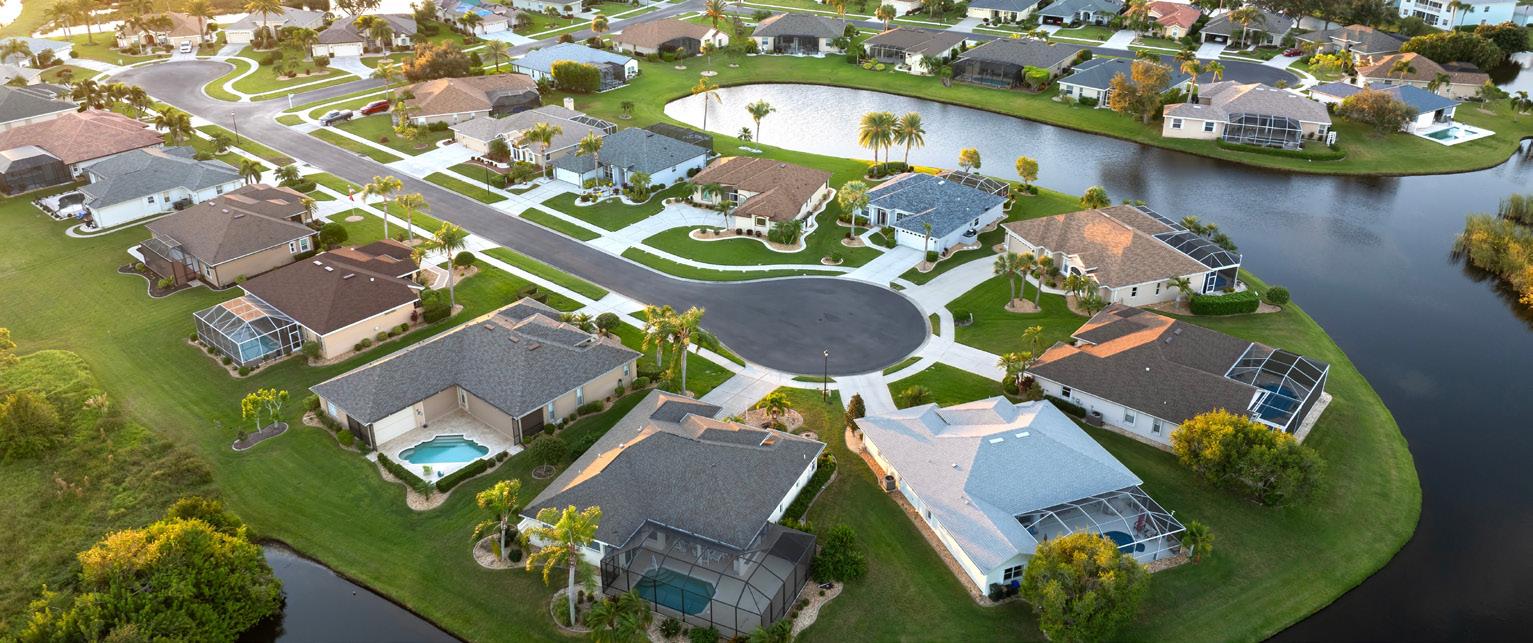
BY MONTJE S. PLANK, PE, CENTRAL FLORIDA ENGINEERING CONSULTANTS, LLC
Erosion is a familiar issue, occurring in many forms and caused by various factors, each unique in its impact. In Central Florida, the primary cause of erosion is stormwater runoff. What starts as minor surface wear can quickly escalate into severe washouts, especially when runoff becomes concentrated. Slopes, berms, and other vulnerable areas are at risk of progressive deterioration. Riverbanks, swales, and pond embankments are particularly susceptible, and insufficiently vegetated or eroded berms can lead to complete blowouts—posing safety hazards, regulatory permit issues, and costly repairs for the association.
Determining the cause of erosion is crucial for effective remediation. Factors such as drainage patterns, soil composition, slope gradients, water table levels, and failing stormwater structures must all be considered. The key question to ask is: “What changed?” Identifying the root cause will guide the appropriate corrective action.
» Soil Replacement – Lost soils should be replaced with compacted clayey sand to restore stability.
» Erosion Control Measures – Runoff-prone areas may need reinforcement with erosion control products like cellular confinement systems or turf mats.
» Stormwater Management Improvements – If regrading to achieve positive drainage is not feasible, installing stormwater inlets and piping may be necessary.
» Flow Diversion – Redirecting concentrated runoff away from vulnerable areas can prevent further erosion.
» Downstream Considerations – Any remediation efforts must ensure that erosion problems are not merely shifted to another location.
Depending on the extent and severity of the erosion, hiring capable contractors may be beneficial. However, without proper oversight, suboptimal solutions may be implemented. Engaging professional Civil Engineers to assess, design, and manage the restoration process can ensure compliance, longevity, and effectiveness.
» Inspect high-risk areas regularly – Look for early signs of erosion, especially after heavy rains.
» Maintain vegetation cover – Grass, shrubs, and trees help anchor soil and absorb runoff.
» Monitor stormwater infrastructure – Keep drains, swales, and ponds functioning properly to control water flow.
» Address minor issues promptly – Small erosion spots can quickly escalate if left unattended.
» Consult professionals for major concerns – A Civil Engineer can provide expert analysis and solutions for complex erosion issues.
Swift and effective remediation is essential to prevent erosion from worsening. By staying vigilant and proactive, HOAs can protect their community infrastructure, avoid regulatory penalties, and reduce long-term repair costs.
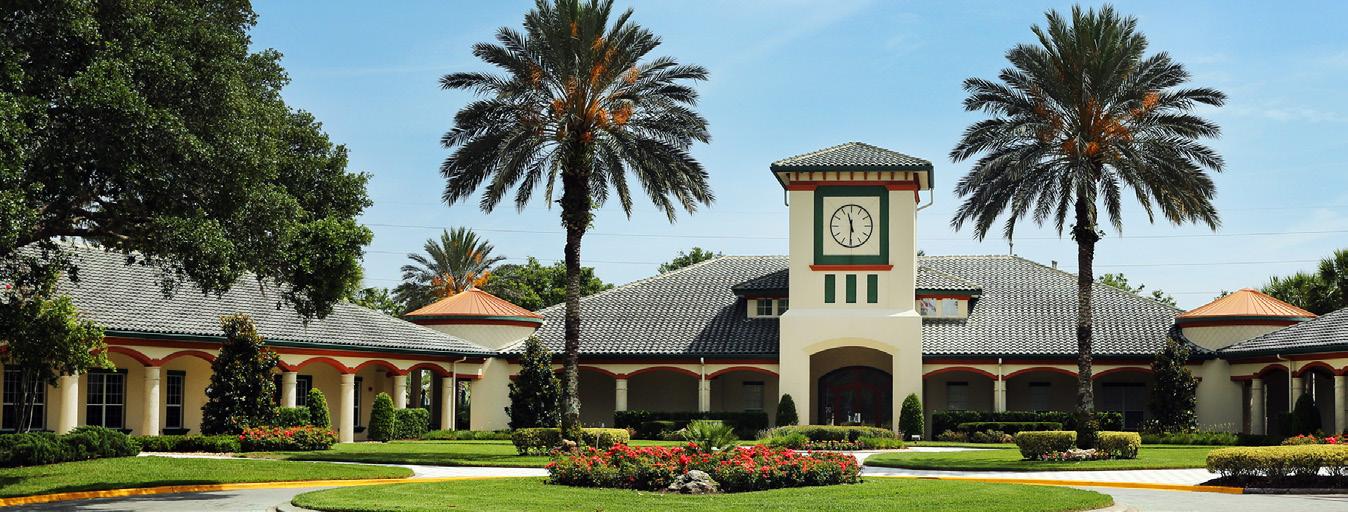
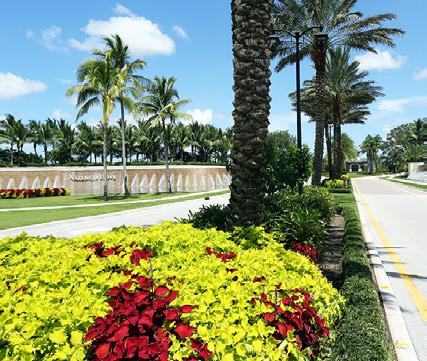
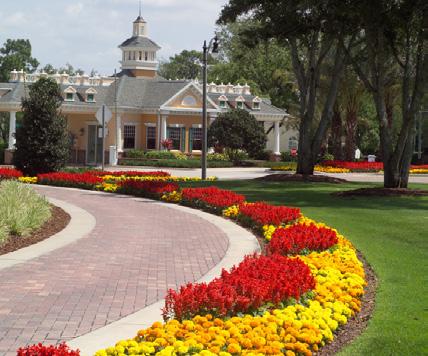
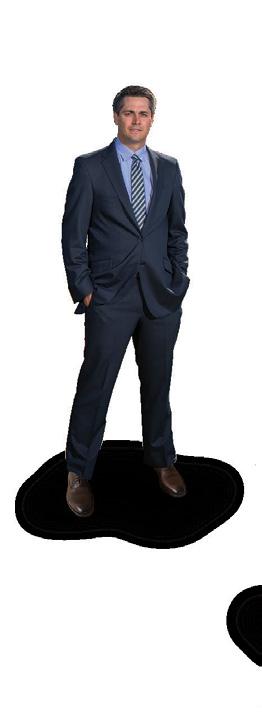




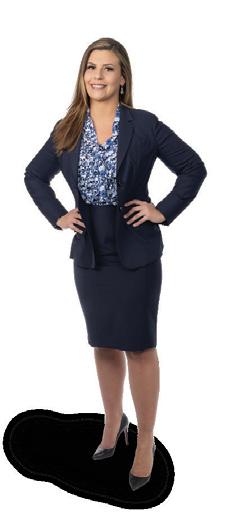
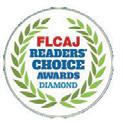

BY BETSY BARBIEUX, CAM, CFCAM, CMCA, FLORIDA CAM SCHOOLS
Which word best describes your board meetings? Discourse or discord? Discourse is verbal exchange between people, discussion, and conversation. Discord is to disagree, to be at variance, to fail to agree or harmonize, clash, strife, and dispute. The difference between the two may be subtle, but profound. Discourse involves listening slowly; discord does not. Here are some tips to use at your next board meeting.
This one is the hardest because you must slow down! Listening slowly includes not interrupting the other person while they are speaking unless you are asking for clarification. In other words, take time to listen.
Show that you care (or are at least somewhat interested). Face the person talking, raise your eyebrows slightly, and nod slowly
to indicate you are following what they are saying. Try to avoid frowning or crossing your arms across your chest.
To listen with empathy does not mean you have to like what’s being said or agree with it. It means putting yourself in their shoes and feelings. There are many conversations that are more factual and don’t carry as much emotion with them; others are quite emotional. So, if what you are hearing has emotion attached to it, acknowledge the emotion. “I can tell you are really concerned about the funding of this project.” “If I were in your position, I would be overwhelmed right now.” Brushing off the emotion with “that’s nothing, don’t worry about it” will only make the emotion grow bigger. The more emotion that gets attached to an issue the longer it will take to resolve it. As emotion grows, objectivity decreases. In the end, that decision could be made on emotion rather than objective facts.
Continued on page 35
Though we all know people who believe they know it all and have done it all, it’s not true. Listening to opinions and perspectives of others is not weakness; it is wise. As the Proverb says, “Wisdom comes from the counsel of many.”
Here are some attitudes that hinder listening:
» Already decided or made up your mind
» Day dreaming
» Distractions
» Selective hearing
» Not asking enough clarifying questions to understand the issue
» Not hearing what was said
» Focusing on too much detail instead of the big picture
Gathering other’s opinions takes time, humility, and a willingness to listen. When decisions have been made with all opinions heard, it is win-win.
Learn to be curious about the likes, dislikes, and beliefs of those around you. Be curious about what makes them tick.
Most of us listen only long enough to guess what’s going to be said, develop our opinion, and deliver it – all the while talking over them. In doing so, we take the conversation away from them and make it about us. Hijacking a conversation on a regular basis will shut the other person down. Eventually they won’t respond. You’ll have a disengaged employee, spouse, or teenager. You’ll get the blank stare and shrugged shoulders; they’ll turn around, roll their eyes, and walk away.
Instead of hijacking the conversation, make it a learning experience – for YOU. Ask yourself, “What can I learn from them?” Make it your goal to become a student of the other person. But to learn, you must become skilled at asking questions - which is the next tip.
To listen for the next question, you really must pay attention. At work, the next question is usually a series of who, what, when, where, why, how questions. Most of the issues discussed at work will involve time frames, money, personnel or vendors, and materials. The deeper you dig with your probing questions, the more thorough will be your understanding. Ask one more question; don’t assume all has been said.
Using the next question tip with family and friends can change the whole relationship. The goal is to see how long you can keep the other person talking by continually asking the next question. This is not the same as nagging, nor is it a disguise for preaching. One

mother learned how to do this so well she could keep her teenage son talking to her for 20 minutes!
The next question comes from some word that was used or a reference that was made. Or perhaps it is a follow up question from something you remember from a previous conversation.
Roger, the mechanic, brought your car back after working on it all day. After you ask all the relevant car questions and he gives you the run down on the repairs, he turns to walk out the door. Because you paid attention and remembered that he liked to hunt, you ask if he’s been deer hunting this year. Watch his body posture change! He turns around, grins, and says he is going to Texas on Thursday. The conversation could stop here but because you are practicing the next question tip, you say “Texas?” And he spends a couple of minutes telling you how his friend has a hunt camp in Texas and invited him, his son and grandson. There is a slight pause, and you ask the next question, “Deer? Or do you hunt something else?” He lists all the game at the 17,000-acre hunt camp and how fun it will be with his family there. Roger is so excited about hunting! You don’t hunt so you don’t personally share the excitement, but this conversation is about Roger not about you. Roger is honored by your remembering that he is a hunter, and you took the time to show interest. You could have kept Roger talking even longer, but his partner has been waiting to drive them back to the shop. By the way, Roger says, “no charge.”
Whether you are participating in a board meeting or family discussion, discourse is preferred.


Betsy Barbieux, CAM, CFCAM, CMCA, a Professional Development Coach, of Florida CAM Schools, LLC, can be reached at Betsy@FloridaCAMSchools.com, or 352326-8365. For more information, visit floridacamschools. com. Subscribe to CAM Matters™ on YouTube.
BY MICHAEL WRIGHT, OWNER OPERATOR OF POOP BANDIT

Many communities throughout Central Florida have resort-style amenities, such as walking trails, vast green areas, and dog parks. One out of every three homeowners will own a dog. A typical small dog of 25 pounds will produce 2 to 4 pounds of solid waste in one week, while large dogs over 25 pounds can produce 4 to 10 pounds of waste in one week. Somewhere between 50% to 70% of owners will pick up after their dog. Dog waste can cause significant health problems for humans and other pets. If not consistently picked up, dog waste can quickly become a substantial issue in large and small communities. This is where pet waste stations can become a game changer in keeping your community clean. When pet waste stations are strategically installed throughout the community, it becomes much easier for residents to pick up after their dogs.
WHERE SHOULD PET WASTE STATIONS BE INSTALLED IN YOUR COMMUNITY?
» Pet waste stations should be installed in every dog park in a community to make it easier to keep these parks clean and disease-free for other dogs. Many diseases spread through dog waste, so keeping these play areas clean is crucial to ensure healthy dogs in your community.
» Any large green area should have pet stations installed nearby. These large green areas in communities often become “pseudo” dog park areas where residents will let their dogs play. A lot of the time, dog owners will not pick up poop left behind in these areas if there is not a pet waste station available for use.
» Many communities have extensive walking trails that are used daily. If residents don’t have trash cans on these paths to throw
out trash, it typically will make its way to being left on the ground. The same is true of dog waste; if there are no pet waste stations in these areas, the poop will be left on the ground in many cases.
» Any high-traffic or highly used areas in communities should have pet waste stations installed nearby. Other areas that are candidates for nearby pet waste station installations are clubhouses, playgrounds, and mailboxes. Of course, don’t install them too close to these areas as they will likely become trash cans that will be too small to accommodate large items. For example, don’t install a pet waste station too close to mailboxes as they will quickly become overrun with mail and overflow frequently.
Three main types of pet waste stations are available: plastic/ fiberglass, steel, and aluminum. Each has pros and cons, but one stands out as the best solution for installations in Florida. Each pet waste station, regardless of the material it is made from, comes in a roll bag dispenser version and/or header bag dispenser version.
1. Plastic/Fiberglass: Plastic pet waste stations are typically the most cost-effective, but face many challenges in the Florida climate. Anything plastic or fiberglass will quickly develop sunrot and dry out. The damage can happen very fast and lead to plastic cracking, sometimes in a matter of months. Fiberglass can last longer, but when it fails, it turns very brittle and disintegrates, leaving shards of fiberglass and sharp edges that can become a liability to HOA communities if any residents become hurt by
Continued on page 38





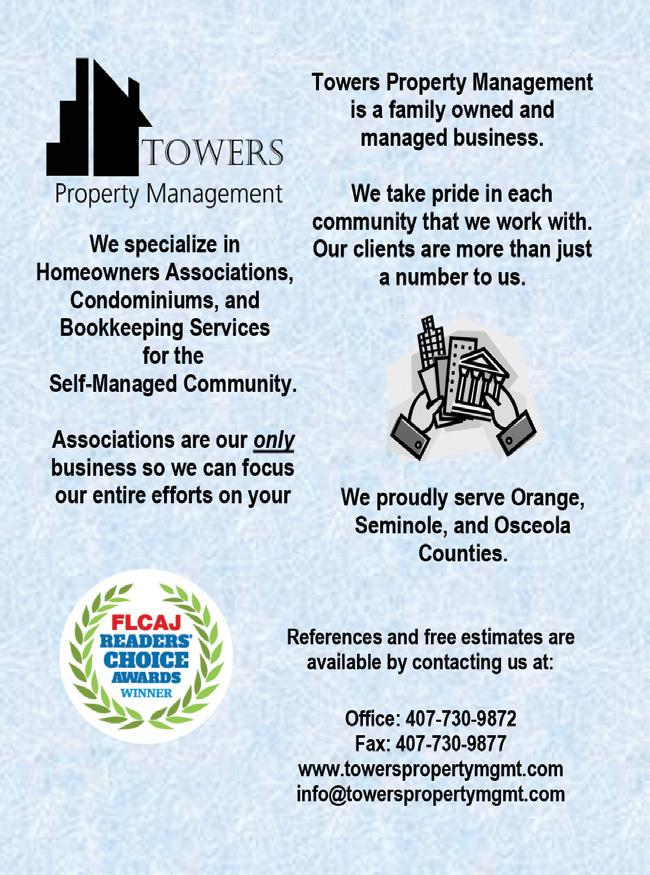
touching the units. The color also fades very quickly on these units and becomes an eye-sore.
2. Steel or Metal: Pet waste stations made of steel or metal are heavily constructed and feel sturdy. They also hold paint very well to help protect them from the elements. However, these are typically not a good fit for the Florida climate for three reasons. In Florida, we have an intense amount of rain, which breaks down steel and causes it to rust quickly. The sun breaks down the protective paint on the steel units over time, leaving them vulnerable to water. Almost every pet waste station is exposed to sprinklers daily. The mineral deposits left behind in the water corrode the paint on the units and the steel, causing it to rust and break down quickly. When you combine the amount of rain, minerals from sprinkler water, and the sun’s intensity on steel pet waste stations, they don’t stand a chance of lasting long-term.
3. Aluminum: Aluminum pet waste stations have a major advantage over plastic and steel stations. They are sun-rot and rust-proof. Most aluminum pet waste stations are installed with a stainless-steel post, another high-rust and corrosion-proof metal. Aluminum pet waste stations typically use powder-coated paint, which gives them an excellent look. However, like our other two examples, the paint on aluminum pet waste stations will fade. Unfortunately, nothing can withstand the Florida sun 100% over the long term.
A note on landscapers: no matter what type of pet waste station you choose to install in your community, none of them will withstand being repeatedly hit by careless landscapers. Steel stations handle being hit the best by lawnmowers and are more challenging to dent. Aluminum is much softer than its steel and metal counterparts and dents much easier. Plastic stations with fiberglass posts don’t stand a chance versus lawnmowers.
You get what you pay for. Avoid purchasing the cheapest pet waste station on Amazon. They are inexpensive for a reason, typically because they are poorly constructed and made of inadequate materials. The locks on these units are also poorly made and quickly become problems.
There are two types of pet dispenser bags for pet waste stations. Type one is roll bags, like rolls of toilet paper, in that they tear off one bag (sheet) at a time. Type two are header bags; these bags tear off like sheets of paper on a legal notepad. Both pet dispenser bags are typically the same approximate size of 8 x 12 inches. Header pet dispenser bags are typically used up faster than their roll-bag counterparts. When tearing off the bag (sheet), the perforations on each bag easily give way, and multiple bags will come off. Pet
dispenser bags come in various colors and thicknesses. The thicker the bags, the higher the cost. However, most are made from highdensity plastic, so they will not tear open when used.
Most pet waste stations are not safely or correctly installed in communities. Like many items in the community, street signs, for example, are pounded into the ground as far as possible and left to hope they stay put for as long as possible. There are many reasons why items installed in the ground should not be done haphazardly and without care. What if a worker hits a gas line? The proper steps to install pet waste stations or any item planted in the ground are:
1. The installation areas should be surveyed by a qualified company that takes precautions and steps to ensure safe installation. All locations should be marked and white-lined with paint for 811 services to clear the location as a safe place to install.
2. Contacting 811 services to mark any potential underground utilities is a must! The last thing an HOA needs is liability from workers hurt by piercing a water, gas, or electricity line.
3. If possible, use a company with an Exactix-certified employee who is surveying the installation of pet waste stations to ensure safety.
4. Only use installation companies that follow the manufacturer’s directions on how to properly install pet waste stations. Pet waste stations need to be assembled correctly and planted in the ground at least 14 inches with cement.
In Florida, pet waste stations should be planted in the ground deeper than 14 inches and filled with more cement than the manufacturer recommends, ensuring they are as weatherproof as possible. The last thing any HOA community wants is a loose pet waste station flying around in a hurricane or tropical storm. Most companies do not follow these simple guidelines for installing items in the ground because doing it correctly takes time and costs more.

Michael Wright has been the Owner Operator of Poop Bandit – Dog Poop Removal Services since 2017. Poop Bandit services over 200 communities in Central Florida. He can be reached at mike@poopbandit.com and 407-6041008. Visit poopbandit.com for more information.
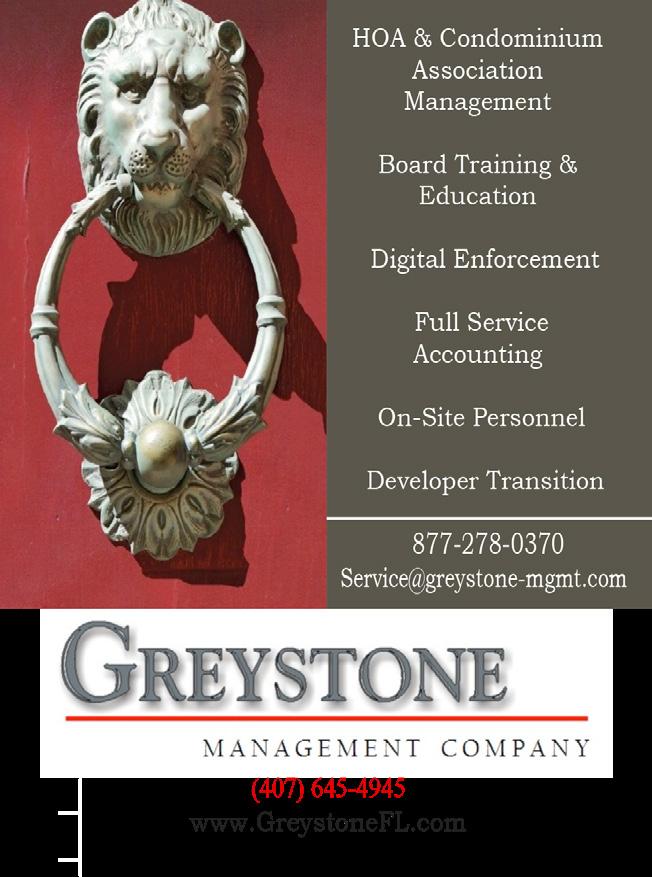
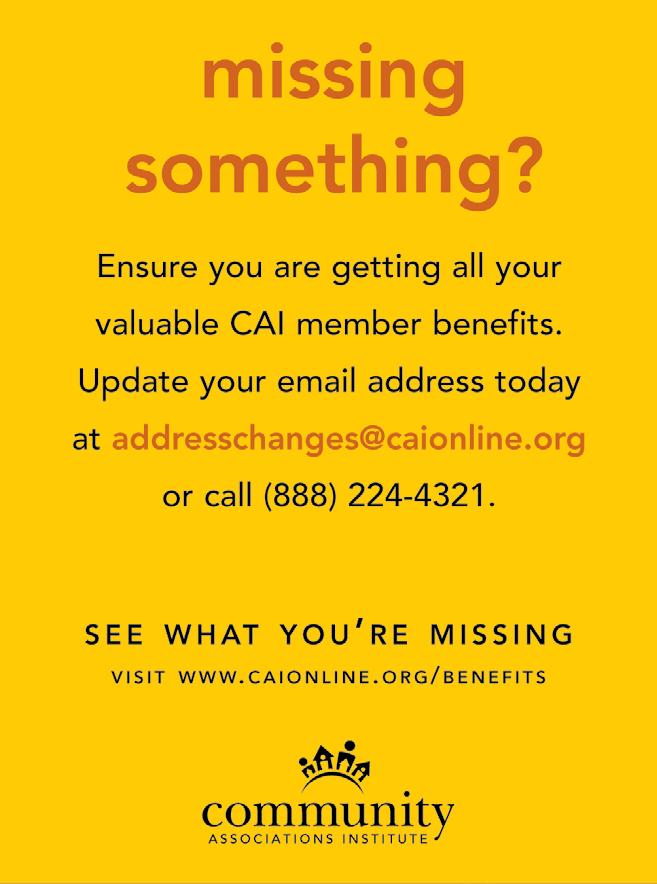
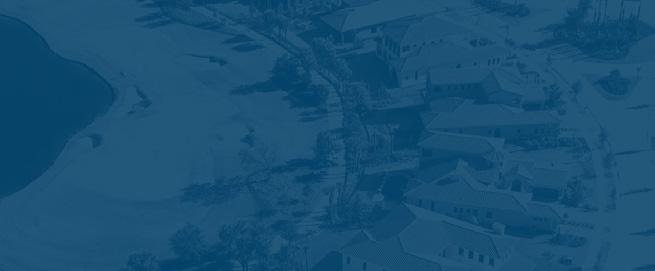
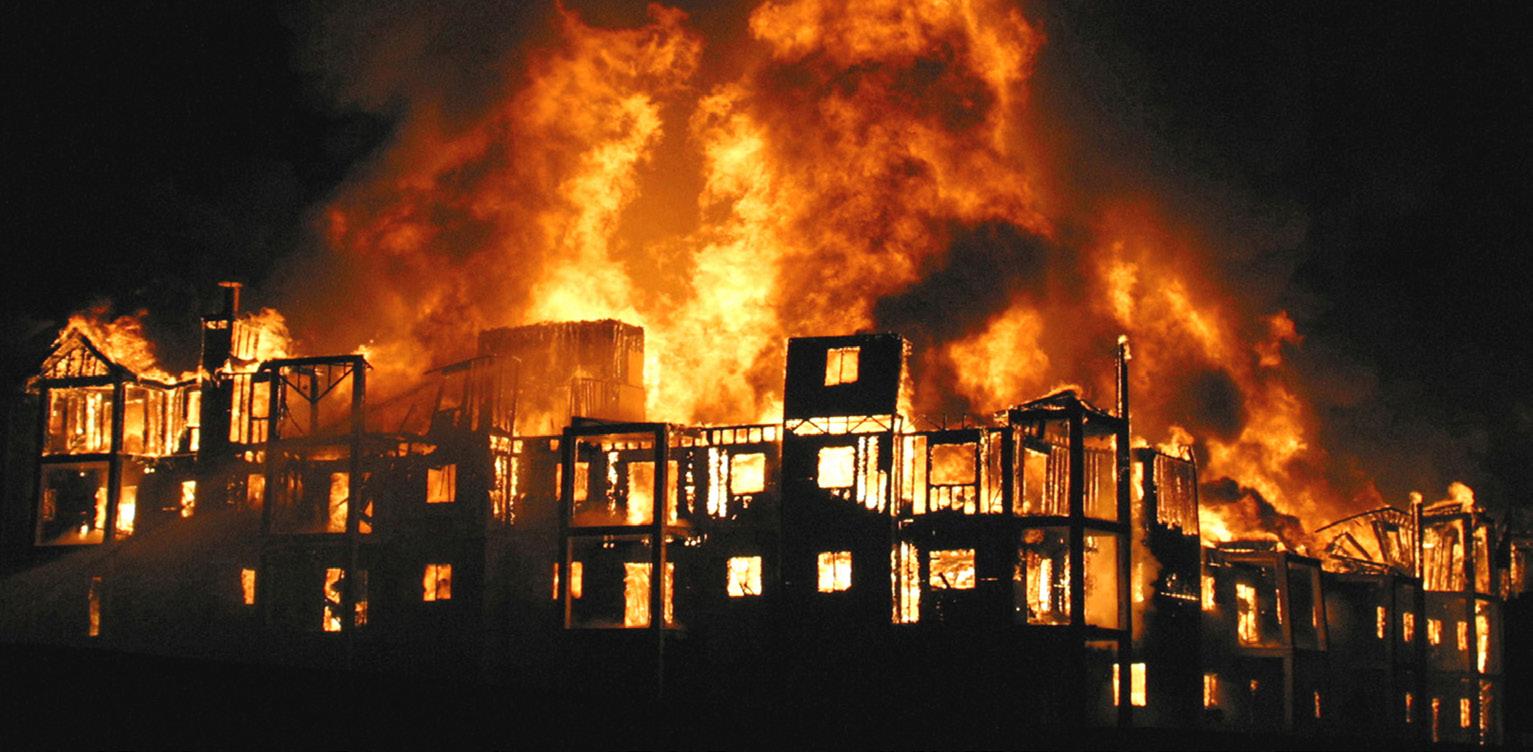
BY DEBBIE MORLOCK, BUSINESS DEVELOPMENT, OCC 911, INC.
Asa community association manager, one of your most important roles is ensuring the safety, well-being, and smooth functioning of the condominium community you oversee. When a fire damages the property, the stakes are high. Beyond the immediate safety concerns, there are numerous steps to follow to ensure a comprehensive response that protects the property, supports residents, and meets legal requirements. Here’s a guide outlining the critical actions to take after fire damage occurs in a condominium setting.
The first and most crucial step after a fire in a condominium is to ensure the safety of all residents and staff. If the fire department has not already cleared the building, coordinate with emergency services to ensure it is safe to re-enter. Evacuate any remaining residents, if necessary, and prevent access to dangerous areas. Once safety is confirmed, assess the immediate risks:
» Are there any live power lines or gas leaks?
» Are the building’s structural integrity and fire suppression systems intact?
» Is there any ongoing risk of fire or smoke damage?
Work with the fire department, building engineers, and emergency services to assess these risks. Safety remains the top priority during this phase.
Accurate documentation is critical when dealing with insurance claims, regulatory requirements, and repairs. Begin a thorough assessment of the damage by:
» Taking photos and videos of affected areas, including the exterior and interior of the building, common areas, and individual units.
» Noting the type and extent of damage (fire, smoke, water damage from suppression efforts, etc.).
» Documenting any damaged or destroyed property, including fixtures, appliances, and structural elements.
This documentation will be essential for filing insurance claims and coordinating repairs. Additionally, if there is a need for residents to file individual claims, providing them with proper records will be invaluable.
Prompt communication with the association’s insurance providers is key. Fire damage often falls under the building’s commercial property or homeowners association (HOA) insurance policy. As soon as you’ve assessed the damage, notify the insurance company to initiate the claims process.
» Provide them with the documentation of the damage, the emergency response efforts, and any immediate repairs needed.
» Review the policy with your insurer to understand the coverage, deductibles, and the process for repairs and payouts.
» Work closely with the insurance adjuster assigned to the claim to ensure that all necessary repairs are included in the coverage.
In some cases, the insurance may cover additional living expenses for displaced residents, so be sure to discuss those options with the insurer.
Once safety is established and documentation is complete, it is
Continued on page 41
important to quickly stabilize the property. Emergency contractors should be called to mitigate further damage and begin the restoration process. This may include:
» Boarding up windows and doors to prevent further exposure to the elements or unauthorized access.
» Cleaning up smoke and water damage from firefighting efforts.
» Securing and inspecting the HVAC, electrical, plumbing, and structural systems to ensure no hidden hazards remain.
» Coordinate with professionals such as fire and water damage restoration experts, electricians, and structural engineers to assess the full extent of the damage. They can help prevent secondary damage and ensure that repairs meet safety codes.
Open and transparent communication with the condominium’s residents is critical throughout the recovery process. As a community association manager, you are the liaison between the board, residents, and contractors. Here’s how to approach it:
» Immediate Notification: Once the fire is contained, send out an initial communication informing residents of the fire, the safety measures taken, and any immediate actions they need to follow (evacuations, sheltering in place, etc.).
» Ongoing Updates: Regularly update residents on the restoration progress, potential disruptions (e.g., water or power outages), and expected timelines for repairs.
» Address Concerns: Be available to answer residents’ questions and address concerns, whether about personal property damage, insurance claims, or the rebuilding process. A transparent communication strategy helps to reduce anxiety, maintain trust, and keep residents informed.
A condominium’s common areas (lobbies, hallways, recreational facilities, etc.) often take the brunt of fire damage. Work closely with contractors and the board to evaluate the extent of the damage to shared spaces. Pay particular attention to:
» Safety Hazards: Confirm that fire sprinklers, smoke detectors, and emergency lighting are functional or replaced as needed.
» Restoration Plans: Depending on the damage, determine if common areas will need to be closed temporarily for repairs or if alternative spaces should be offered for displaced residents.
» Accessibility: Ensure that all areas are accessible to residents with disabilities and are up to code following repairs. Make a plan for the restoration of these common spaces and keep residents updated about when they will be available again.
Once the immediate recovery process is underway, take the
opportunity to review the community’s emergency plans. A fire event often uncovers gaps in preparation and response procedures. Work with the board to evaluate:
» Fire Prevention and Response Protocols: Ensure that fire prevention measures such as fire alarms, extinguishers, and sprinklers are regularly inspected and functional.
» Communication Plans: Strengthen the way you communicate with residents during emergencies to ensure prompt action and clarity in the future.
» Disaster Recovery Plans: Update disaster recovery and insurance protocols to ensure smoother responses in future emergencies.
This evaluation and planning can help minimize risks and enhance preparedness for future disasters.
Finally, once the immediate response has stabilized the situation, the association can begin the long-term task of repair and rebuilding. Coordinate with contractors, architects, and engineers to create a clear restoration plan. The repairs should restore the condominium to its previous state and, if possible, improve areas that may need additional work, such as fireproofing or structural reinforcements.
Fire damage in a condominium is a serious situation that requires a quick, organized, and multi-faceted response. By ensuring safety, documenting the damage, communicating with residents, and coordinating with professionals, a community association manager can help the community recover swiftly and efficiently. With careful planning and cooperation, the condominium can emerge stronger, with enhanced safety measures in place for the future.
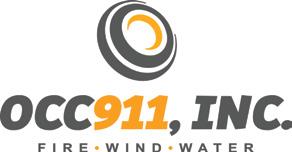
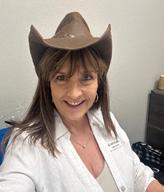
Debbie Morlock is a Business Development Representative at OCC 911, Inc., with a strong background in property damage mitigation and restoration. Born and raised in the Orlando area, Debbie brings extensive industry knowledge to her role. With her previous experience as a licensed Community Association Manager, she has a unique understanding of HOA operations and the needs of both property owners and communities. Her combination of expertise in property damage restoration and HOA management makes her a valuable resource for clients seeking comprehensive solutions.

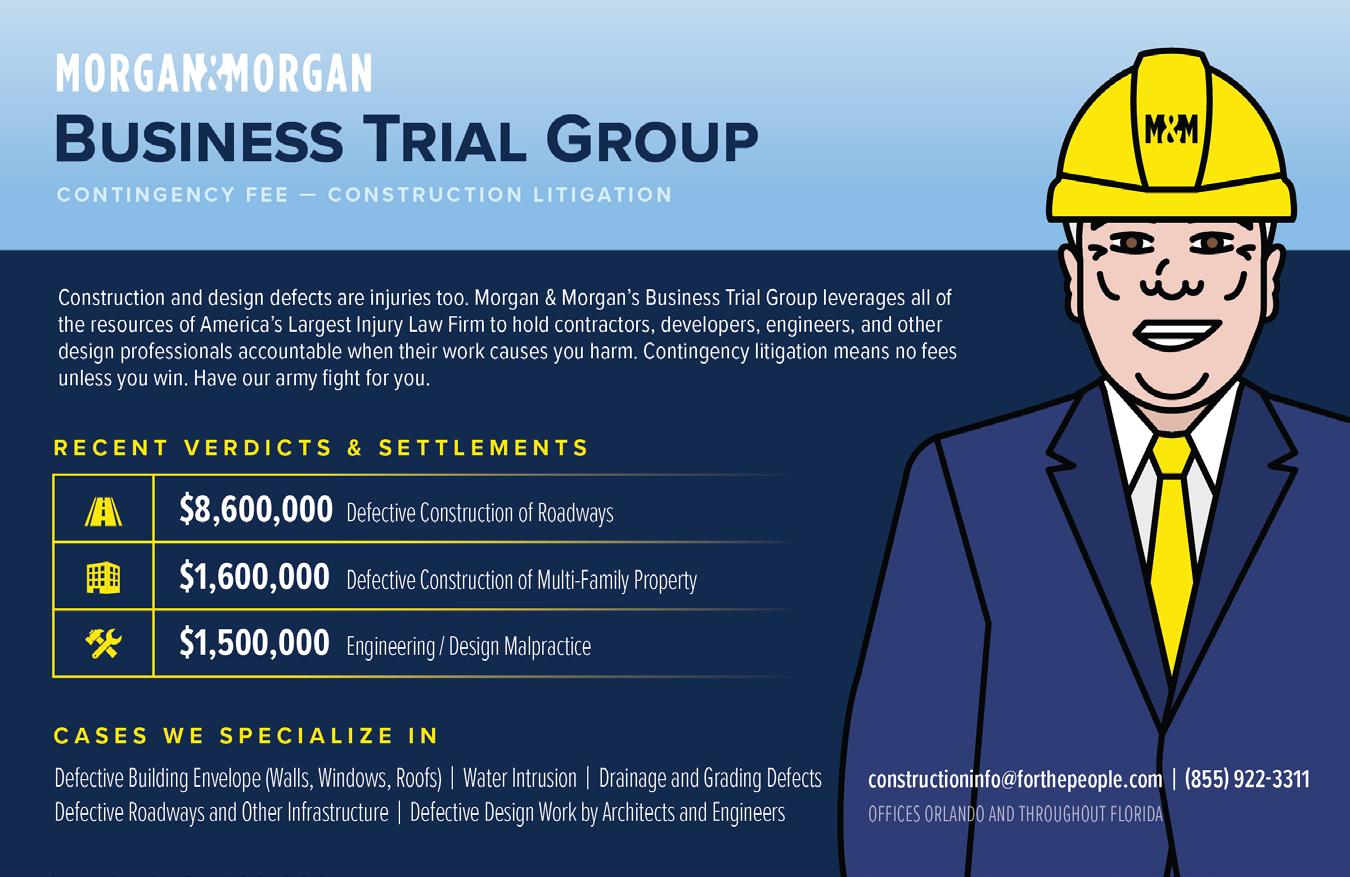

Element Service Solutions
Fision - Hotwire Communications
Valley Bank
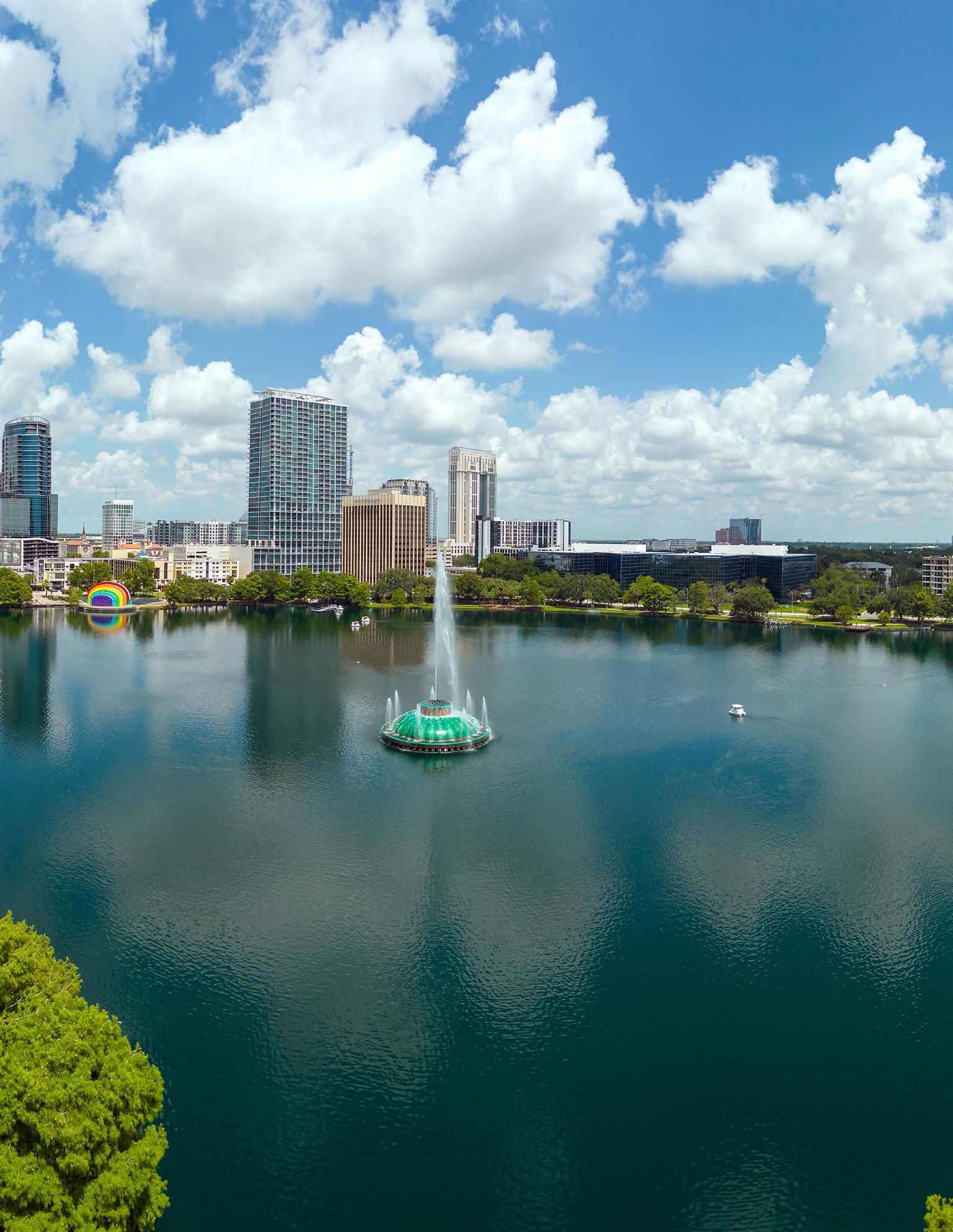
Ansbacher Law
Asphalt 365 Becker
Blue Stream Fiber
Castle Group
Cepra Landscape
Cogent Bank
Cohen Law Group
Edison Association Management
Empire Management Group
EmpireWorks Reconstruction and Painting
First Citizens Bank
GetQuorum
Glickstein, Laval, Carris, P.A.
Juniper Landscaping
Leland Management
Arias Bosinger, PLLC
Asphalt Restoration Technology Systems
Pacific Premier Bank
Morgan & Morgan Business Trial Group
One Florida Bank
Operation Paint
Overton Construction & Consulting
Performance Roofing
Premier Association Management
RealManage
Reserve Advisors
The Sherwin-Williams Company
Sihle Insurance
Summit Broadband
Truist Bank
Vantaca
Vice Painting
Village Management Software
Yellowstone Landscaping
Ruggieri Law Firm
SmartStreet powered by Banc of California
Exclusive Landscaping Greystone Management
Towers
Management